
85 Fun Critical Thinking Questions for Kids & Teens

Have you ever thought about using fun questions to practice critical thinking?
Students may need a little guidance to think their way through questions that lack straightforward answers.
But it is that process that is important!
How the Right Questions Encourage Critical Thinking
Every parent knows how natural it is for children to ask questions.
It should be encouraged. After all, asking questions helps with critical thinking.
As they grow older, however, training them to answer questions can be equally beneficial.
Posing questions that encourage kids to analyze, compare, and evaluate information can help them develop their ability to think critically about tough topics in the future.
Of course, critical thinking questions for kids need to be age-appropriate—even better if you can mix a little fun into it!
That’s what I hope to help you with today. I’ve organized the questions below into three different ages groups:
- Upper elementary
- Middle school
- High school

Get a Question-Based Critical Thinking Exercise—Free!
Introduce critical thinking gently & easily with thought-provoking exercises.
Upper Elementary
Students in upper elementary grades can be reluctant to put themselves out there, especially with answers that seem weird.
In some cases, such hesitancy is actually fear of differing from their peers (and a barrier to critical thinking ).
But that’s exactly why it’s important to practice answering ambiguous questions.
We want our children to stand firm for their beliefs—not cave to peer pressure.
Additionally, students may feel uneasy about answering serious questions, uncertain of tackling “big” problems.
However, with careful use of creative questions for kids, it’s possible to engage even the most reluctant children in this age group.
The idea is to simply get them interested in the conversation and questions asked.
If you have an especially reserved student, try starting with the funny critical thinking questions.
Humor is a natural icebreaker that can make critical thinking questions more lighthearted and enjoyable.
Of course, most younger kids just like to be silly, so playing upon that can keep them active and engaged.
With that said, here are some great questions to get you started:
1. Someone gives you a penguin. You can’t sell it or give it away. What do you do with it?
2. What would it be like if people could fly?
3. If animals could talk, what question would you ask?
4. If you were ice cream, what kind would you be and why?
5. Do you want to travel back in time? If yes, how far back would you go? If no, why not?
6. What could you invent that would help your family?
7. If you could stay up all night, what would you do?
8. What does the man on the moon do during the day?
9. What makes something weird or normal?
10. Can you describe the tastes “salty” and “sweet” without using those words?
11. What does it feel like to ride a rollercoaster?
12. What makes a joke funny?
13. What two items would you take if you knew you would be stranded on an island and why?
14. Do you have a favorite way of laughing?
15. What noise makes you cringe and cover your ears? Why?
16. If you could be the parent for the day, what would you do?
17. If you could jump into your favorite movie and change the outcome, which one would you pick and why?
18. If you could be invisible for a day, what would you do?
19. What makes a day “perfect”?
20. If you owned a store, what kind of products would you sell?
21. If your parents were your age, would you be friends with them?
22. Would you still like your favorite food if it tasted the same as always, but now had an awful smell?
23. What would you do if you forgot to put your shoes on before leaving home?
24. Who would you be if you were a cartoon character?
25. How many hot dogs do you think you could eat in one sitting?
26. If you could breathe under water, what would you explore?
27. At what age do you think you stop being a kid?
28. If you had springs in your legs, what would you be able to do?
29. Can you describe the color blue to someone if they’re blind?
Middle School
At this point, students start to acquire more complex skills and are able to form their own conclusions based on the information they’re given.
However, we can’t expect deep philosophical debates with 12 and 13 year olds.
That said, as parent-teachers, we can certainly begin using more challenging questions to help them examine and rationalize their thought processes.
Browse the fun critical thinking questions below for students in this age range.
You might be surprised to see how receptive middle school kids can be to such thought-provoking (yet still fun) questions .
30. What would happen if it really did rain cats and dogs?
31. What does it mean to be lucky?
32. If you woke up in the middle of a dream, where would you be?
33. Is it ever okay to lie? Why or why not?
34. If you were solely responsible for creating laws, what one law would you make?
35. What makes a person a good friend?
36. What do you think is the most important skill you can take into adulthood?
37. If you had to give up lunch or dinner, which would you choose? Why?
38. How much money would you need to be considered rich?
39. If you knew you wouldn’t get caught, would you cheat on a test?
40. If you could live anywhere in the world, where would that be?
41. What is your greatest strength? How is that an asset?
42. If you had an opportunity to visit the International Space Station, would you do it?
43. Is it better to keep the peace or speak your mind?
44. Imagine yourself as your favorite animal. How would you spend your day?
45. Would you be friends with someone who didn’t have the same values as you?
46. How much screen time do you think is too much?
47. Can you describe your favorite color without naming it?
48. If you suddenly became blind, would you see things differently?
49. Would you ever go skydiving?
50. Describe the time you were the happiest in your life. Why did this make you happy?
51. If you had a million dollars, what would you do?
52. If you had to move to a new city, would you change how you present yourself to others?
53. What do you need to do in order to be famous?
54. If you could rewrite the ending of your favorite book or movie, what changes would you make?
55. How would you tackle a huge goal?
56. How would you sell ice to an eskimo in Alaska successfully?
57. What makes you unique?
High School
Critical thinking takes on an entirely different role once students reach high school.
At this age, they have a greater sense of right and wrong (and what makes things so) as well as a better understanding of the world’s challenges.
Guiding teens to delve deeper and contemplate such things is an important part of developing their reasoning and critical thinking skills.

Whether it’s fun questions about hypothetical superpowers or tough critical thinking questions about life, older teens typically have what it takes to think their way to a logical conclusion .
Of course, use your discernment as you choose discussion topics, but here are some questions to help get you started:
58. How can you avoid [common problem] in the future?
59. Do you think it’s okay to take a life in order to save 5, 10, 20 or more people?
60. If you could go back and give your younger self advice, what would it be?
61. Is it better to give or receive a gift?
62. How important is it to be financially secure? Why?
63. If it was up to you, what one rule would you change in your family?
64. What would you do if a group of friends wanted to do something that you thought was a bad idea?
65. How do you know that something is a fact rather than an opinion?
66. What would it take to get you to change your mind?
67. What’s the most important thing in your life?
68. If money were of no concern, what job would you choose and why?
69. How do you know if you’re happy?
70. Do you think euthanasia is moral?
71. What is something you can do today that you weren’t able to do a year ago?
72. Is social media a good thing or not?
73. Is it right to keep animals in a zoo?
74. How does your attitude affect your abilities?
75. What would you do if you found out a friend was doing something dangerous?
76. If you could have any superpower, what would it be? Why?
77. What will life on Earth look like in 50 years?
78. Which is more important, ending world hunger or global warming?
79. Is it a good idea to lower the voting age to 16? Why or why not?
80. If the electrical power went out today, how would you cook if using wood wasn’t an option?
81. If you could magically transport yourself to any other place, where would that be and why?
82. When should teenagers be able to stay out all night?
83. Does the number zero actually exist?
84. What defines a generous person?
85. Does an influential person influence everyone?
Feel free to print out these fun critical thinking questions and incorporate them into your homeschool week!

will your children recognize truth?
About the author.
Jordan Mitchell
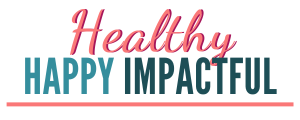
150 Fun Critical Thinking Questions For Kids, Teens, & Adults
Critical thinking questions for kids get them thinking and questioning. To go beyond rote learning.
The reason they excel later in life will not be based on the information they memorized. But instead on how well they think, make decisions, communicate, and use their creativity.
These questions are designed to help them build these essential skills.

What makes a good critical thinking question?
Open ended questions are perfect for encouraging critical thinking and problem-solving. Kids (and grown-ups) have to think about their answers. Below you will find the best age-appropriate examples to use in the classroom, at home, or during your everyday routine .
In fact, there’s no question about it. Critical thinking is important for kids. And adults too!
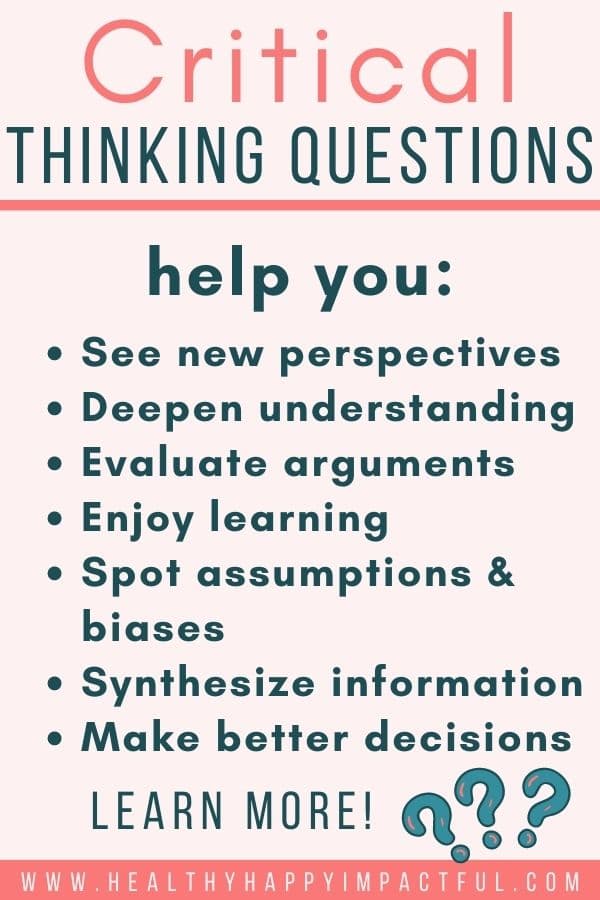
Good Questions For Kindergarten To Think Critically
Younger kids need more concrete questions. These critical thinking questions will help them use reasoning and think deeply, even when they are small.
1. How do you know if something was a good decision?
2. How are these two things similar?
3. What are the differences between _______ and _________?
4. How would you feel if __________?
This question is great for building empathy .
5. Who was the main character? Why do you say that?
6. When is ___________ a problem?

7. What is the problem?
8. Why is this a problem?
9. What did you notice about _________?
10. Do you think he/she sees this the same way you do? Why or why not?
11. Has this happened before?
12. Do you think it will happen again? Why do you think this?
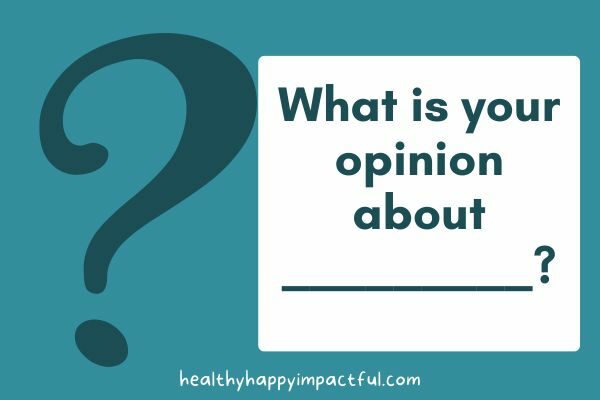
13. What is your opinion about _________? Why?
14. Is this appropriate? Why or why not?
15. What do you think would happen if __________?
16. What caused this to happen?
17. Do you think the world would be better if __________?
18. If you were in charge, what would you do differently?
19. Where can you find out more about this?
20. What does ______ mean?
21. Do you agree?
22. Can you give me an example of ________?
23. How do you know?
24. How would you solve this problem?
25. What makes something weird? What makes something normal?
Questions For Students: Elementary Through Middle School
For this age of kids, use any of the examples above and try these more abstract critical thinking questions too.

26. What do you think was the turning point?
27. Is there evidence to support your opinion (or decision)?
28. What does the evidence tell you?
29. What do you think would have been a better ending to… (book, movie, story)
30. When is the best time to start this?
31. When you think about solving a problem, where do you like to start?
32. What character/person changed the most? Why do you think this?
33. How could the author have created a thrilling twist in this story?
34. Who could help you with this? Why would they be a good fit to help?
35. Why is this important?
36. Why do you think ________ said that?
37. Why did the __________ (author, speaker) write/say this?
38. How does an idea grow? Or how does someone get from being a beginner to being an expert?
39. Do you think that what happened is what they meant to happen?
(Often, results are different than what people first think they will be.)
40. What can you use to help you decide?
41. What are the pros and cons of this?
42. Why is this happening?
43. What is the main message from this? (Or the lesson learned?)
44. What would you ask the author (speaker, etc.) if you could?
45. Do you have any questions about this?
46. Do you think it is too good to be true?
47. Can you defend these actions?
48. Compare this with this.
49. What would the world be like if ________? (kids were in charge, the sun was farther away, etc.)
50. Do you think there is a better alternative?
51. Is this person trustworthy? Why or why not?
52. At what age does someone stop being a kid? Why?
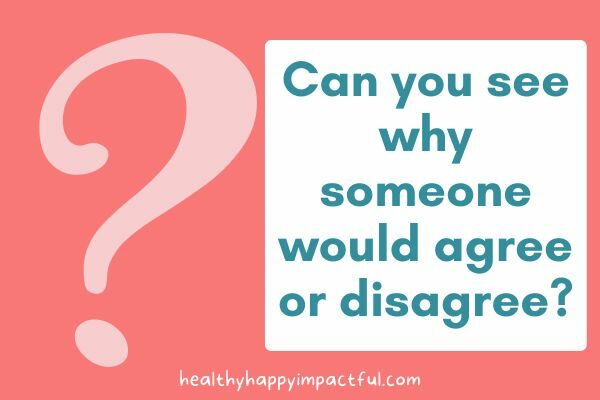
53. Can you see why someone would agree or disagree?
54. How would this ________ benefit or help others?
55. How will you know if your idea worked?
56. What is wrong with this situation?
57. What is good in this situation?
58. If someone were to argue your point, what do you think they would say?
59. Why do you think the character/person did that?
60. Is this fact or opinion? How do you know?
61. Was this change for the better? Or did it make things worse?
62. Who is most likely to _________? Why?
63. What do you think are the consequences of this decision?
64. Do you think we are asking the right question(s)? What is a different question instead?
Related Posts:
- Best Thought-Provoking Questions
- Deep Questions For Kids & Adults
- Philosophical Questions To Ponder With Kids
Critical Thinking Questions For High School & College Students
These critical thinking questions are more complex. They encourage abstract thinking, plus explore logic, ethics, and reasoning.

65. Why did you make that decision?
66. How did you get to that decision? What was your thought process?
67. What are the advantages of this?
68. What are the disadvantages of this?
69. How could we make this (project, paper, etc.) better?
70. What do you think the problem is….?
71. What do you think the best solution for this is? Why?
72. Could someone interpret this differently? How so?
73. How would you explain this to someone who doesn’t know anything about it?
74. What are a few alternative possibilities? Are any better than the others?
75. What are the short-term implications of this decision?
76. What are the long-term implications of this decision?
77. How would you achieve a big goal ?
78. (After they come up with a solution to something) Are there other possible ways to solve this problem?
79. How can you use the pros and cons to make a good decision?
80. Do you think when many people do something, it seems more “right,” even when it isn’t?
81. What are the potential risks to this decision?
82. What are the strengths of this argument?
83. What are the weaknesses of this argument?
84. Where is this lacking in evidence?
85. What can this story teach us about life?
86. Where would this solution work? Where would it not work?
87. Why do you think it is important to ask this question?
88. Why are new ideas important in our society?
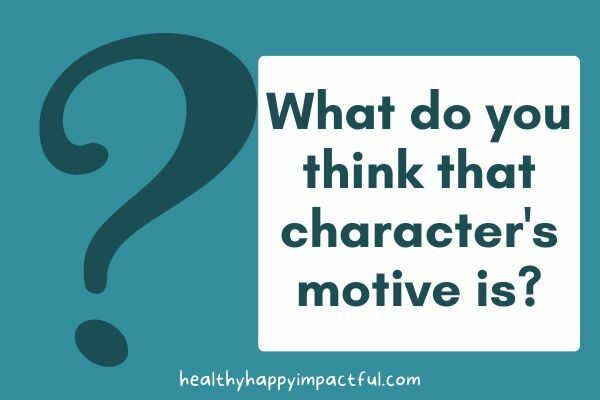
89. What do you think that character’s motive is?
90. When should you reevaluate your initial thoughts/decision?
91. Do you think this is an important issue?
92. What do you think should have happened instead?
93. What is the counterargument?
94. Why is this relevant?
95. Do you think ________ will ever happen?
96. If it does, who would it affect most? Why?
97. What assumptions are being made in this situation?
98. Is it ever ok to lie?
99. Why do you think this feels like __________?
100. How is this related to your values and beliefs?
- Best Topics To Discuss With Others
- Ice Breaker Questions To Get to Know Someone
- Best Questions To Ask Teens
Critical Thinking Questions For Adults
These are great for a conversation at home or at work interviews to see how well potential candidates think on their feet.

101. Where do you see strengths?
102. Where do you think there are areas for improvement?
103. Why did these things help you in the long run?
104. What information do you need to find out before making a good decision?
105. If you could sit down and have dinner with anyone in the world, who would it be? Why?
106. What would you say to this person?
107. Should others care about this? Why?
108. When should you ask for help?
109. Who will benefit most from this decision?
110. Who will benefit least from this decision?
111. Have we considered all the options?
112. What questions do you have?
113. Are there any biases that you think are playing out here?
114. Are you making an assumption about __________?
115. When will you see your results?
116. Where do you often find this type of problem? Why?
117. In your opinion, what caused ____________ to happen?
118. Was it avoidable?
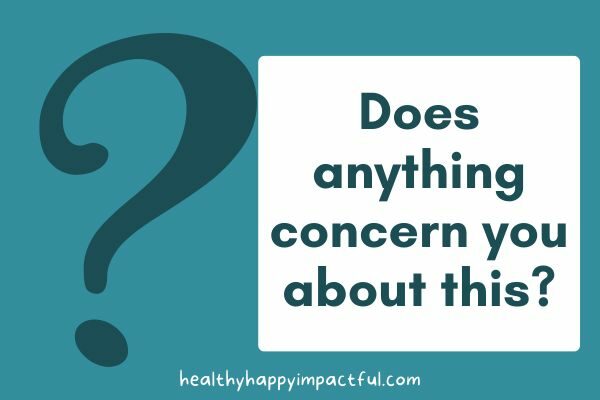
119. Does anything concern you about this?
120. When is this acceptable?
121. When is this not acceptable (or appropriate)?
122. What is one thing that would have changed everything?
123. When do you think this will benefit _________ (the company, society, etc.)?
124. When a disagreement happens at work, what do you do?
125. Is this goal achievable ?
126. How does your work experience help you fill this role?
127. Has this ever been done before? When?
128. What would need to happen for you to reconsider?
129. When will we need this?
130. What skills fit well with this position?
Related: Fun Rapid Fire Questions To Ask
Examples of Kids Critical Thinking Questions: By Word
Another way to split up your critical thinking questions is by word.
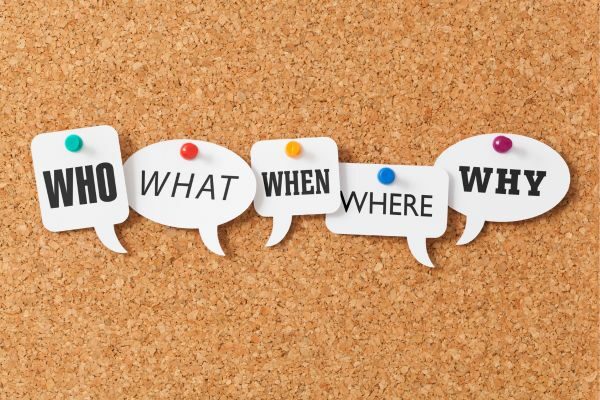
- Who is most directly affected by this decision?
- Who is the protagonist? Who is the antagonist?
- Who was the most important character?
- Who was a supporting character that was essential to the storyline?
- What is the problem you are trying to solve?
- What information is important to know about this before forming an opinion?
- What was the point of _________?
- When is it a good time to stop (or take a breather)?
- When should you know the answer?
- When will it be time for this? How do you know?
- When will this be critical?

- Where can you go to ask for help?
- Where can you find a good solution? Or information that helps you solve this problem?
- Where could this idea lead?
- Why has this issue come out into the spotlight?
- Why do you think ______ acts that way?
- Why is _______ happening, but ________ is not?
- How else could we have done that?
- How else could this be handled?
- How would you have responded in this situation?
- Fun Hobbies For Families To Do
- Best Family Challenge Ideas
More Ways To Encourage Critical Thinking In Kids
Want to go beyond questions? No problem! Here are other practical ways to build this crucial skill:

Change your questions to them.
Turn your normal yes or no questions to more open ended questions.
Example: Instead of “How was your day?” go with “What was the most interesting part of your school day today?”
Refrain from stepping in.
These days parents feel like they should be fixing their kids’ problems constantly.
Instead, hold back and force your child to problem-solve on their own. Ask questions and guide them through the problem, but let them know that they are in charge of finding their own solutions.
Play Games And Do Activities That Promote Critical Thinking
Here are a few great ones!

Two Truths & A Lie Game – The players have to decide which statements are true and which one is not. This game is great for learning to read body language too!
Good Debate Topics For Kids – Nothing builds quick critical thinking like a lively debate.
Riddles: What Am I? – These word riddles help kids think through different possibilities.
Guess The Animal Riddles for Kids – More riddles all about animals to get kids thinking.
Encourage creativity.
Provide your child with opportunities to use their imagination.
Sometimes, all this takes is getting your child off screens and outside playing with sticks!
Encourage them to build something , make up a new game, and think outside the box whenever possible.
Let them fiddle with things.
My son has a very “why” brain and loves to mess with stuff. It used to embarrass me when we were around others.
But, one day, my husband and I realized that his “working things out” isn’t bad. We just needed to teach him in what context it is appropriate. Now he fiddles with everything, and it is amazing to watch his mind work.
Let them question.
The same goes for questions. They should be challenging assumptions and questioning the world around them. Too many people take for granted the things that they hear and read. Teach your child to be different.
Promote Active Listening.
Encourage your child to ask questions to clarify understanding and develop communication skills.
Examples: “What I hear is _________.” Or, “How do you know _________?”
Try New Things.
Travel. And regularly expose your kids to new ideas and experiences. This helps them see their regular world in a new light.
Think Critically Yourself.
Finally, your child will be much more likely to think critically if they see a parent who does it. So, apply all of these strategies to yourself as well.
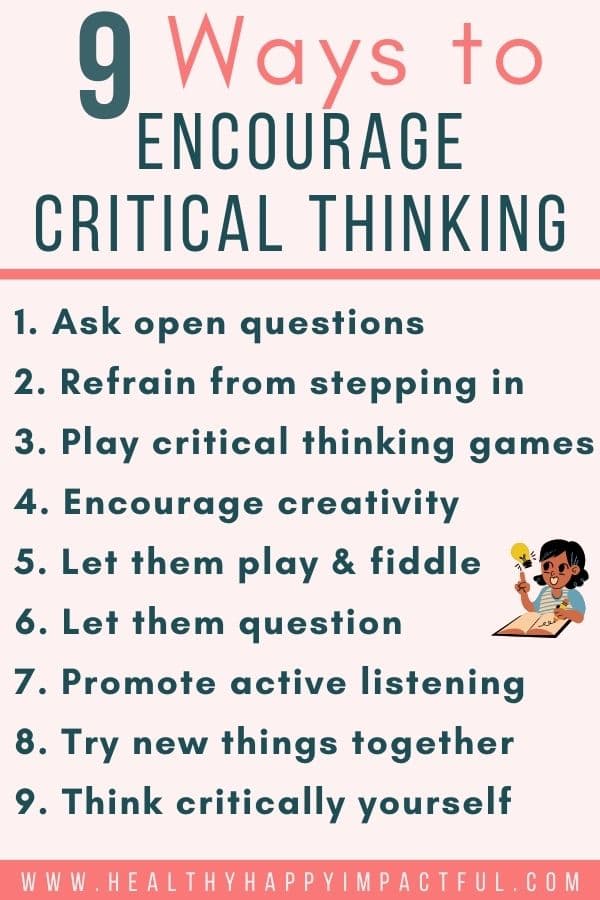
To Consider With Critical Thinking Questions For Kids
Teaching children to form their own opinions is how we build a generation of people that will analyze, evaluate, and make decisions for the betterment of the world.
It’s not just important. It’s critical to our future as a society.
More family-friendly posts you’ll love…
- Telephone Game Phrases & Statement Ideas
- Ice Breaker Kids & Teen Games
- Best Books List For 4 Year Olds
Creative Kids Critical Thinking Questions For Students
Jennifer is the founder and chief editor of Healthy Happy Impactful®. She believes that living, loving, and connecting deeply are the foundation for a good life. She holds a degree in education and is a mom to 3 kids.

85 Critical Thinking Questions to Carefully Examine Any Information
There might be affiliate links on this page, which means we get a small commission of anything you buy. As an Amazon Associate we earn from qualifying purchases. Please do your own research before making any online purchase.
The ability to think critically will often determine your success in life.
Let’s face it. Every day, we are bombarded by news, social media updates, and an avalanche of information. If you take all of this at face value, it’s easy to be deceived, misled or ripped off.
That’s why it’s important to develop a mindset that focuses on critical thinking . This is a skill that needs to be developed in the classroom. But it’s also a valuable life skill.
With that in mind, the following post will share 85 critical thinking questions you can use to increase your awareness about different problems by carefully examining available information.
Let’s get started…
Table of Contents
What Are Critical Thinking Questions?
Critical thinking questions are inquiries that help you think rationally and clearly by understanding the link between different facts or ideas. These questions create a seemingly endless learning process that lets you critique, evaluate, and develop a depth of knowledge about a given subject. Moreover, you get to reinforce your viewpoints or see things in a new way.
We make decisions every day, whether at work or home. Adopting logical, rational, and practical approaches in addressing various issues requiring critical thinking is essential in decision-making. Therefore, before arriving at a decision, always ask yourself relevant questions and carefully analyze the matter’s pros and cons.
Critical Thinking Questions When in an Argument
When you make an argument using a critical thinking approach, you focus on justified claims that are valid and based on evidence. It helps one establish a strong argument.
- Do I disagree with the other person? Might the person I'm arguing with be misinformed on what they are saying?
- Would I be comfortable saying what I am telling him/her if I was in front of a group of people?
- What would happen if I lose this argument? Is engaging in this argument worth my time and energy? How will I feel if I lose?
- Is there room for ambiguity or misinterpretation? Are we arguing because I didn't make my point explicit? Should I take my time to understand his school of thought?
- Do I need some rest before saying something? Am I arguing because of other reasons other than the issues at hand? Do I need to take some time and cool down?

- Is it more important that I’m right? Am I trying to ask to prove an unnecessary point?
- Is this argument inductive, deductive, or abductive? Is it a weak or strong argument that I need to engage in? Is it compelling or sound?
- Is my opponent sincere? Given that they are wrong, are they willing to admit that they are wrong? Can they depend on available evidence, wherever it leads?
- Are my opponents only trying to shift their burden to me? What is the best way to prove them wrong without making them feel bad?
- Are the people I'm arguing with only interested in winning, or are they trying to pass some information across and help me discover the truth?
Critical Thinking Questions When Reading a Book
When you read a book, you probably ask yourself many “why” questions. Why is this a problem? Why did the character say that? Why is this important? The most challenging part of reading a book is assessing the information you are reading. These questions can help.
- If I learn only two things from this book, what will they be? How will they help me? How will I apply them in my daily life?
- What message are the authors trying to pass across? Are they making suggestions or providing evidence for their arguments?
- Given that almost every book is about solving problems, what is the most prevalent issue that the author is trying to solve?
- What is the author’s writing style? What strategy or master plan does the author employ to convey his/her main ideas throughout the book?
- Do I have background information about the book’s topic? If so, how is what the author is saying different from what I already know?
- What didn’t I understand from the book? Should I re-read the book to understand everything the writer is trying to convey?
- Which sections of the book do I love the most, and why? Generally, do I like this book? Should I look for more books that are written by the same author?
- If I had a chance to meet this book’s author, what questions would I ask him/her? What would I tell the writer about the book? Is it a great book worth recommending to your friends and family members?
- Who are the main characters of the book? If there is only one main character, what overarching goal does the character accomplish?
- In what ways did the protagonist change from the start of the book to the end? What caused the changes? Was the protagonist reckless in some ways? Which ways?
Critical Thinking Questions to Spot a Scam
Asking questions when you feel that a fraud or a scam is being presented to you is a good way to stretch your critical thinking muscles. Are you being emailed or messaged by a stranger? Or maybe there are other red flags you are unsure about. If so, ask these questions.
- Does it seem to be too good to be true? Is this stranger pushy or trying to lure me into making a poor decision?
- When trying out online dating: Is my new “friend” professing strong feelings towards me although we’ve only interacted for a few hours?
- Why is a stranger calling me to ask about my Social Security Number (SSN), personal contact information, or bank details while claiming they are from the bank or a phone company?
- When buying products online, why does the seller ask me to pay for goods using an insecure payment option like Bitcoin or money order?
- Does the email I have received have any spelling or grammatical errors? Is the language used overly formal or informal?
- If I do a quick search about the exact words of the email I received, does Google indicate it's a fraud or scam?
- Why should a stranger manipulate me using obvious questions like “Would you want to be rich or poor?” While they already know the answer?
- Is the email asking me to download an attachment? Or click a link to some insecure website?
- Is the person trying to make me feel selfish or guilty for not sending them money, whether for a donation or buying a product?
- Is the stranger portraying a sense of urgency and using pressure tactics? Are they telling me that their family member needs urgent medical attention?
Critical Thinking Questions About Your Life
It can also help to ask yourself a few critical thinking questions about your life. This way, you can gather basic information and uncover solutions to problems you might not have otherwise thought of.
- Where do I wish to be in a few years, probably two, three, or five years? What short-term and long-term goals should I set?
- What have I achieved so far from the time I set my previous goals? What should I be grateful for?
- Do I have any values that guide me in life? If so, what are these values? Am I always true to these values?
- Am I always worried about what people around me think? Can I act independently without the need to meet social expectations?
- What should people say about me at my funeral? Would they talk about how good I made them feel or how rich and flashy I was?
- If I wasn't afraid of anyone or anything, what would I have done? What if I didn't have any fear in me?
- If today was my last day, what extraordinary thing would I do? Can I do it right now?
- What should I do with the things that matter the most to me?
- What things will make the greatest difference in my future life if I take action now?
- How should I react when I feel unwanted by the people I love the most? Should I tell them?

Critical Thinking Questions for a Debate or Discussion
When you are in the middle of a debate or discussion, you need to know that what you are saying is fact, have evidence to support your claim, and position yourself as an expert in what you are saying. Here are some critical thinking questions to ask when you are in a debate or discussion.
- Is there fairness in this discussion? Is the moderator supporting one side? Do they want to make one side look stupid or wrong?
- What is the aim of this discussion? Is there a major problem that needs to be solved? If so, how can I help solve it?
- Who are the people affected by this discussion? If they were here, what would they say?
- Do my views on this discussion matter? If I raise my point, will I be redundant?
- What am I supposed to learn from this debate, and how can I use what I have learned in my daily life?
- Does the audience seem to be biased towards one side? Are they booing one side? What can I do even if it's our opponents being booed?
- Who are the discussion panel members? What views have they held about this kind of discussion or any other related discussions in the past?
- How can I make my point without being ambiguous? Before I speak, should I take down some notes to avoid any confusion during my speech?
- Am I ready to apologize if I make a mistake during the discussion? If so, what are the limits?
- What information does my team, or I need before this discussion?
Critical Thinking Questions About Lying
Admitting when you are wrong, choosing not to cheat, and sharing constructive feedback are all ways to show your honesty. Here are some critical thinking skills to ask regarding lying.
- Will the lie hurt those I am telling, or will it help them? What if being honest might cause my friend unnecessary pain?
- Should I be the one telling this person a lie, or I let someone else do it?
- Will I be the one hurt if I tell this lie? Will my friend feel I am a betrayer? Will it affect our friendship?
- Do they answer my questions in detail, or are they always trying to ignore and dodge the main problem?
- What if I ask these people the same question using different terms and wording? Will they give me the same response?
- Did the tone of my friend suddenly change after I asked him/her this question? Do they sound louder, faster, or slower compared to how they usually speak?
- Does this person have something to gain by lying to me? What is their motive?
- Does this person take a sudden pause or hesitate more than usual when responding to my question?
- When I look at these people's faces, do their facial expressions match what they say?
- Should I believe this person or not? What are my intuitions? Does it look like they are telling the truth?
- Do they blink like other days when I ask them questions? Are they always trying to avoid direct eye contact?
- Why do they seem uncomfortable when it’s just a normal conversation?
Critical Thinking Questions When Presented With a Claim
Critical thinking is much more than just evaluating whether a claim is true or not. It also means a critical thinker reflects on what follows from true claims.
- What does this claim mean, and what are its implications? What if it's a false claim?
- Which of my morals, values, or beliefs do I have to give up to accept this claim?
- Do professionals in this field agree or disagree with the claim that has been made?
- Do they have evidence to back their claim? Which is the most robust evidence to support the claim?
- What argument can I come up with to refute this claim? Or what is the best view that can support this claim?
- Who is the primary source of the claim being made? Is the basis of the claim reliable?
- Is it a claim, or it's just an opinion?
- Is the claim likely to be 100% false, true, or partially true?
- Am I allowed to refute the claim and table my evidence, or is it one-sided?
Critical Thinking Interview Questions
Critical thinking skills are valuable in any industry or field and for almost all roles. During a job interview, you will be asked questions so the potential employer can assess your skills and see how you use logic. Your critical thinking ability is just one vital part that can play into your professional development.
- Is there a time you had to convince someone to use an alternate approach to solve a problem?
- Have you ever had to make a difficult decision quickly?
- How would you handle a situation where your supervisor handled something wrong or made a mistake?
- What is one of the most difficult decisions you have ever had to make at work?
- How would you solve a disagreement between coworkers when approaching a project?
- Can you describe a time when you anticipated a problem ahead of time and took the appropriate steps to stop the problem from becoming an issue?
- If you discover a cheaper way to do something or a better solution to a problem and try to explain it to your supervisor, but they don’t understand, what do you do?
Critical Thinking Questions for Kids
We can’t leave the kids out either. Critical thinking questions for kids get them thinking and talking. It also allows a parent to get to know their child better.
- How many grains of sand do you think are on the beach?
- What would happen if it stopped raining?
- Do you think there is life on other planets?
- Should children be able to set their own bedtimes?
- How would you describe what a tree looks like without saying green or leaves?
- Can you name five different emotions?
- Can you talk for five minutes without uttering “um?”
What Are the Basic Principles of Critical Thinking?
Your critical thinking skills involve gathering complete information, understanding and defining terms, questioning the methods by which we get facts, questioning the conclusions, and looking for hidden assumptions and biases.
Additionally, we can’t expect to find all of the answers, and we need to take the time to examine the big picture of it all.
Here are the basic principles:
- Disposition: Someone with critical thinking skills is often skeptical, open-minded, and practices fair-mindedness. They can look at different viewpoints and change positions if the evidence and reason lead them to do so.
- Criteria: In order to think critically, one must also apply criteria. Certain conditions must be met before someone believes in something. The information needs to be from credible sources.
- Argument: An argument is simply a statement or proposition that is shown with supporting evidence. When you use your critical thinking skills, you identify, evaluate, and construct your argument.
- Reasoning: With critical thinking comes reasoning. You must examine logical relationships among the statements being made.
- Point of View: Critical thinkers can see things from different perspectives and different points of view.
What Are Good Analysis Questions?
Analysis is a part of critical thinking that allows you to examine something carefully. Someone with analytical skills can examine the information presented, understand what that information means, and then properly explain that information to others. Analysis in critical thinking provides more clarity on the information you process.
When analyzing, you may ask yourself, “how do I know this,” how would I solve this problem,” and “why does it matter?”
Why Is Critical Thinking an Important Skill?
Critical thinking skills allow you to express thoughts, ideas, and beliefs in a better way. It also leads to improved communication while allowing others to understand you better. Critical thinking fosters creativity and encourages out-of-the-box thinking. This is a skill that can be applied to many different areas of your life.
For example, knowing the answers to critical thinking questions for a job interview will better prepare you for the interview. Many employers, during questioning, are likely to ask you critical thinking questions to assess if you have the ability to evaluate information effectively so you can make more informed decisions.
Final Thoughts on Critical Thinking Questions
Although it's common to get torn between making two or more choices, nobody wants to make the wrong decision. The only thing you can do to avoid this is use critical thinking questions to examine your situation. The answers to these questions will help you make informed decisions and help you comprehend crucial matters in your life.
Want to learn more about critical thinking and decision-making using a real-life example? Here is how Jeff Bezos uses critical thinking to make some of the most challenging life decisions.
Finally, if you want to ask better questions, then watch this short, 20-minute course to learn how to have a great conversation with virtually anyone .
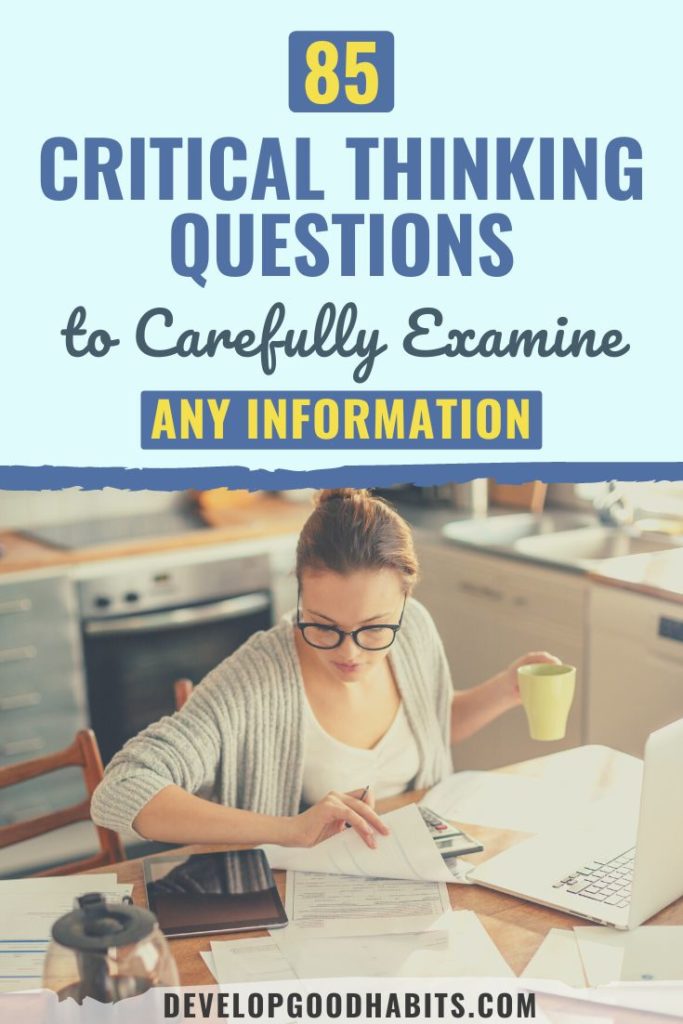

Best fun critical thinking questions with answers
Home » Questions » Best fun critical thinking questions with answers
Critical thinking is an essential skill that allows individuals to analyze, evaluate, and interpret information in a logical and objective manner. It enables us to think outside the box, make informed decisions, and solve problems creatively. Engaging in critical thinking exercises helps stimulate our brains, expand our knowledge, and improve our problem-solving abilities. One way to enhance critical thinking skills is through fun and thought-provoking questions.
In this article, we have compiled a list of fun critical thinking questions with answers that will challenge your reasoning and ignite your imagination. Whether you are looking for icebreaker activities, conversation starters, or brain teasers to entertain friends and family, these questions are perfect for all occasions.
So, get ready to put your thinking cap on and enjoy these exciting critical thinking questions!
See these fun critical thinking questions with answers
- What can you break, even if you never pick it up or touch it?
- What has keys but can’t open locks?
- What has a heart that doesn’t beat?
- If you have me, you want to share me. If you share me, you no longer have me. What am I?
- What goes up but never comes down?
- What is always in front of you but can’t be seen?
- What comes once in a minute, twice in a moment, but never in a thousand years?
- What has a thumb and four fingers but is not alive?
- What can you hold in your right hand but never in your left hand?
- What has a face that doesn’t frown, a heart that doesn’t beat, and a back that doesn’t hurt?
- What has a ring but no finger?
- What can you catch but not throw?
- What gets bigger the more you take away?
- What can you hear but not touch or see?
- What belongs to you but is used more by others?
- What has a neck but no head?
- What has a bottom at the top?
- What gets wetter the more it dries?
- What has an eye but can’t see?
- What has a mouth but can’t eat?
These fun critical thinking questions are just the tip of the iceberg. By engaging in activities that challenge our thinking, we can improve our problem-solving skills and cultivate a more analytical mindset. So, the next time you want to stimulate your brain or spark an interesting conversation, give these questions a try!
Related Post:

Leave a Comment Cancel reply
Save my name, email, and website in this browser for the next time I comment.
Best self harm quotes
Best the day the crayons quit questions
Best self finding quotes
Best the day after tomorrow movie questions
Best self exploration quotes
Best the dating game questions

© the narratologist 2024
- Grades 6-12
- School Leaders
How do You Use Social Media? Be entered to win a $50 gift card!
100+ Critical Thinking Questions for Students To Ask About Anything
Critical thinkers question everything.
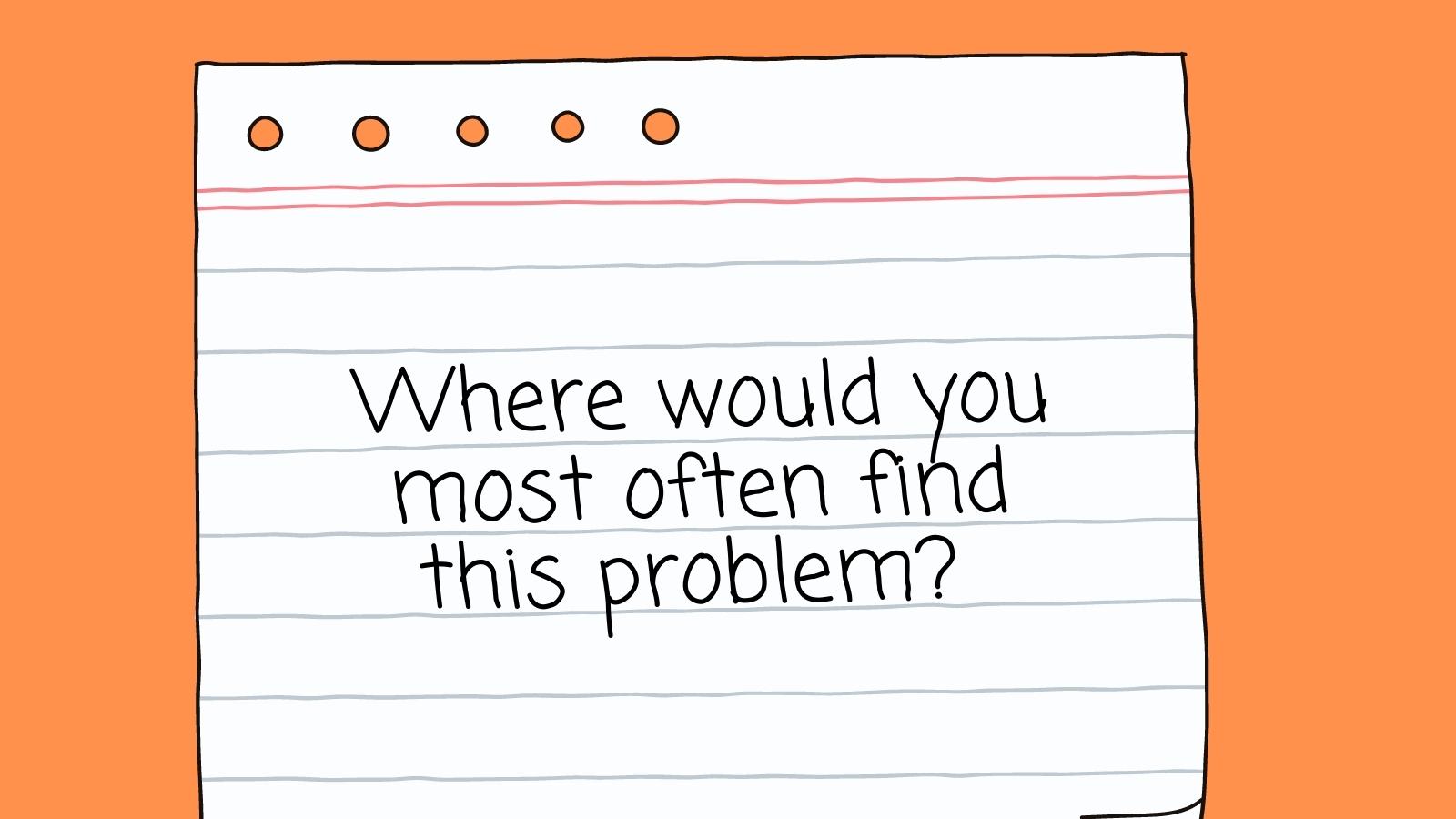
In an age of “fake news” claims and constant argument about pretty much any issue, critical thinking skills are key. Teach your students that it’s vital to ask questions about everything, but that it’s also important to ask the right sorts of questions. Students can use these critical thinking questions with fiction or nonfiction texts. They’re also useful when discussing important issues or trying to understand others’ motivations in general.
“Who” Critical Thinking Questions
Questions like these help students ponder who’s involved in a story and how the actions affect them. They’ll also consider who’s telling the tale and how reliable that narrator might be.
- Is the protagonist?
- Is the antagonist?
- Caused harm?
- Is harmed as a result?
- Was the most important character?
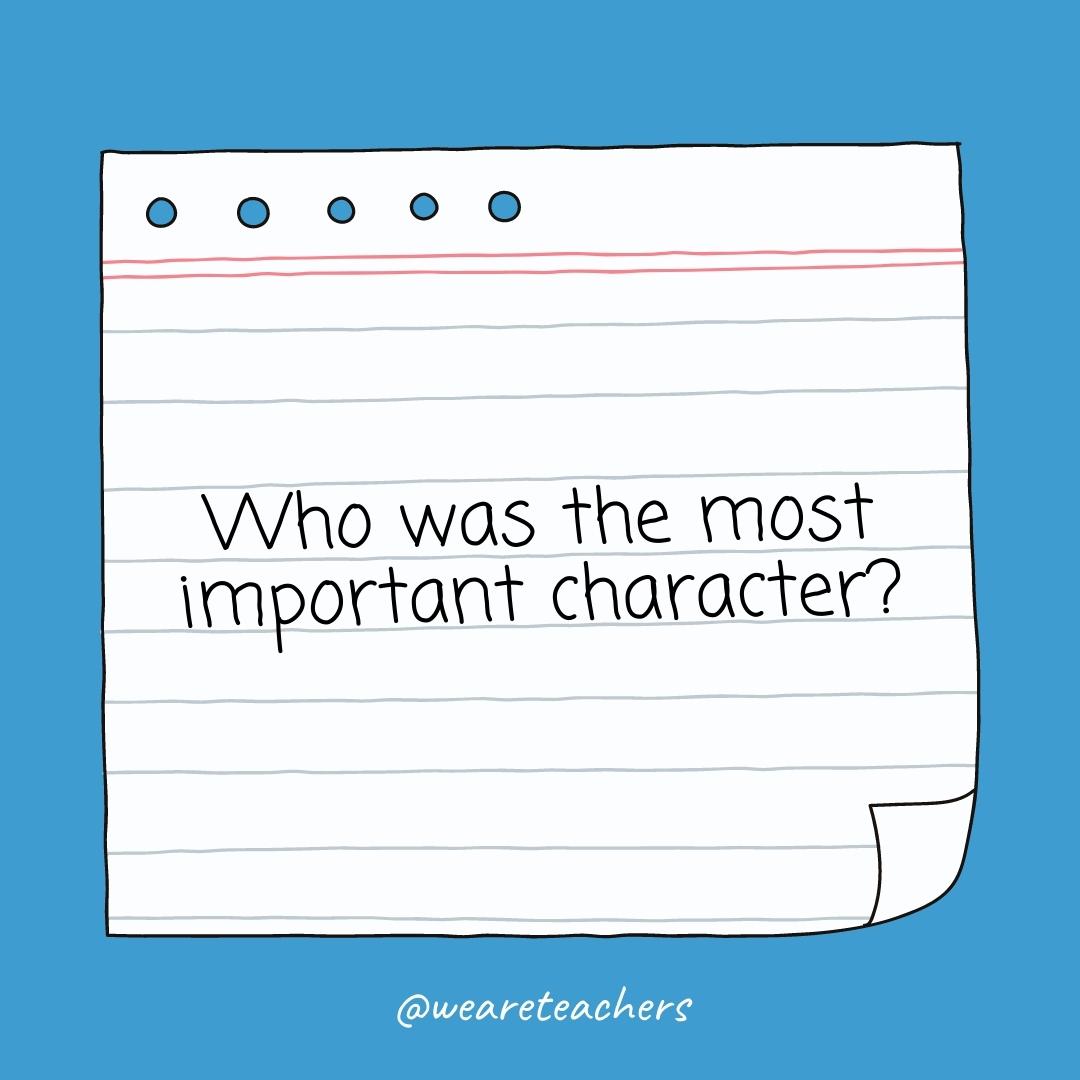
- Is responsible?
- Is most directly affected?
- Should have won?
- Will benefit?
- Would be affected by this?
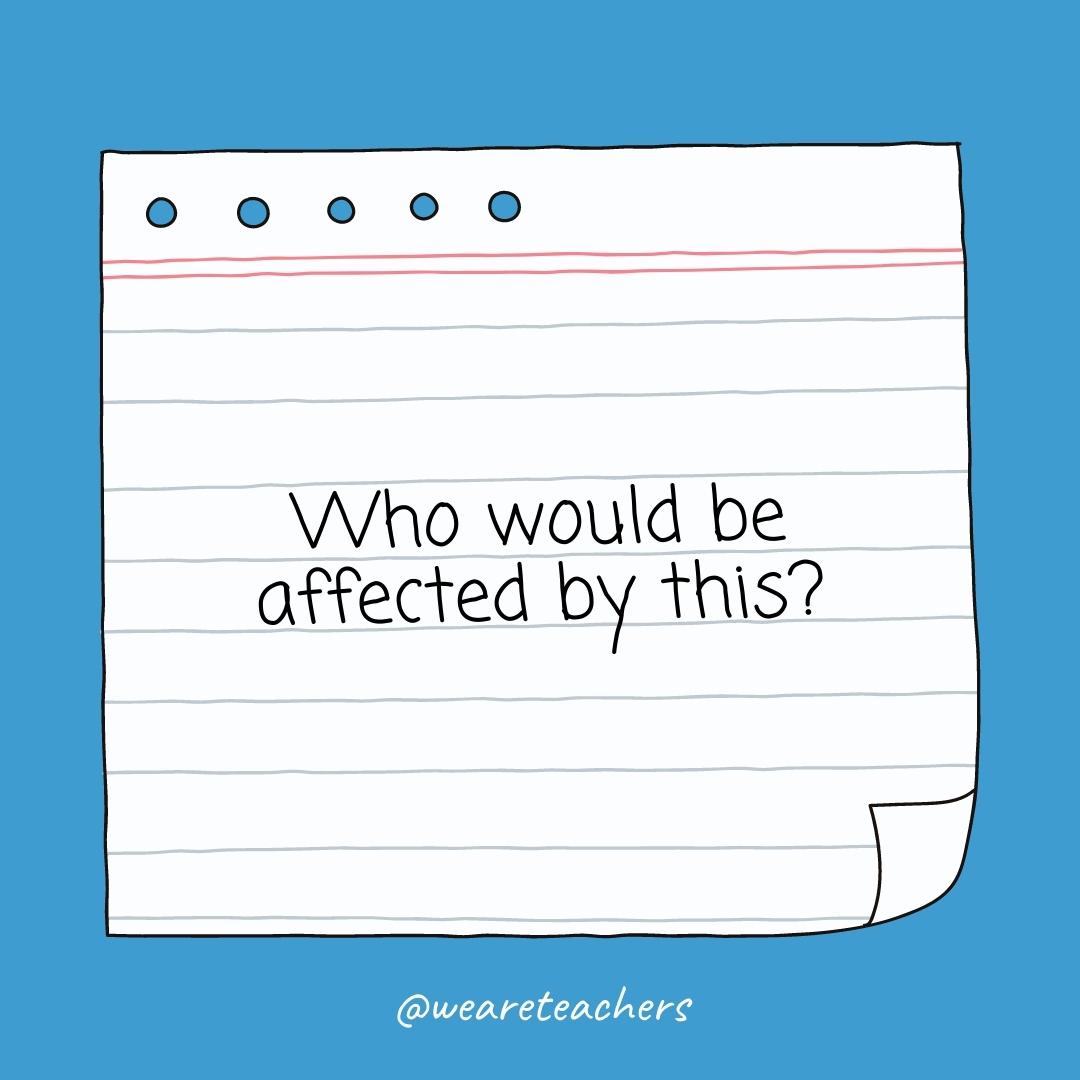
- Makes the decisions?
“What” Critical Thinking Questions
Ask questions that explore issues more deeply, including those that might not be directly answered in the text.
- Background information do I know or need to know?
- Is the main message?
- Are the defining characteristics?
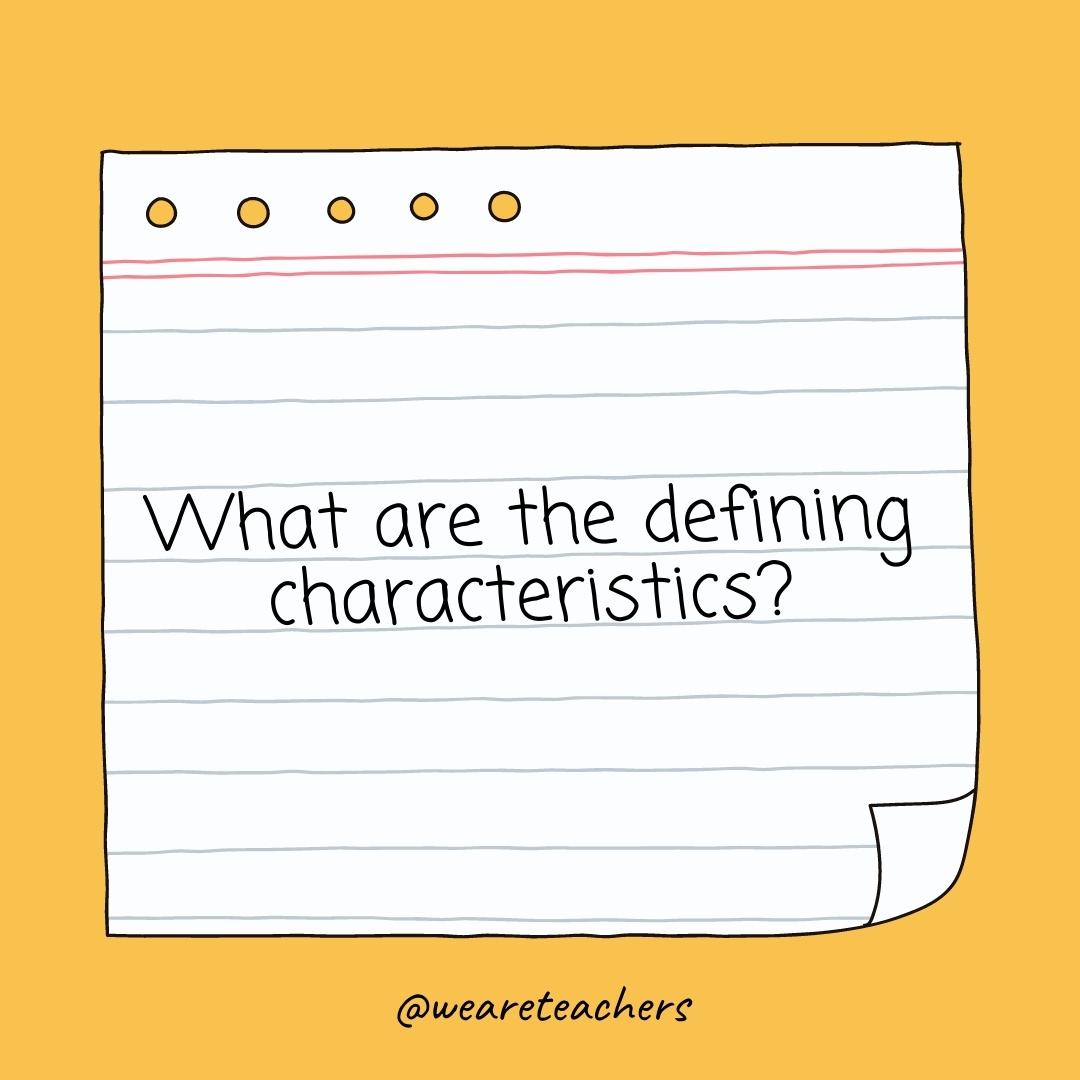
- Questions or concerns do I have?
- Don’t I understand?
- Evidence supports the author’s conclusion?
- Would it be like if … ?
- Could happen if … ?
- Other outcomes might have happened?
- Questions would you have asked?
- Would you ask the author about … ?
- Was the point of … ?
- Should have happened instead?
- Is that character’s motive?
- Else could have changed the whole story?
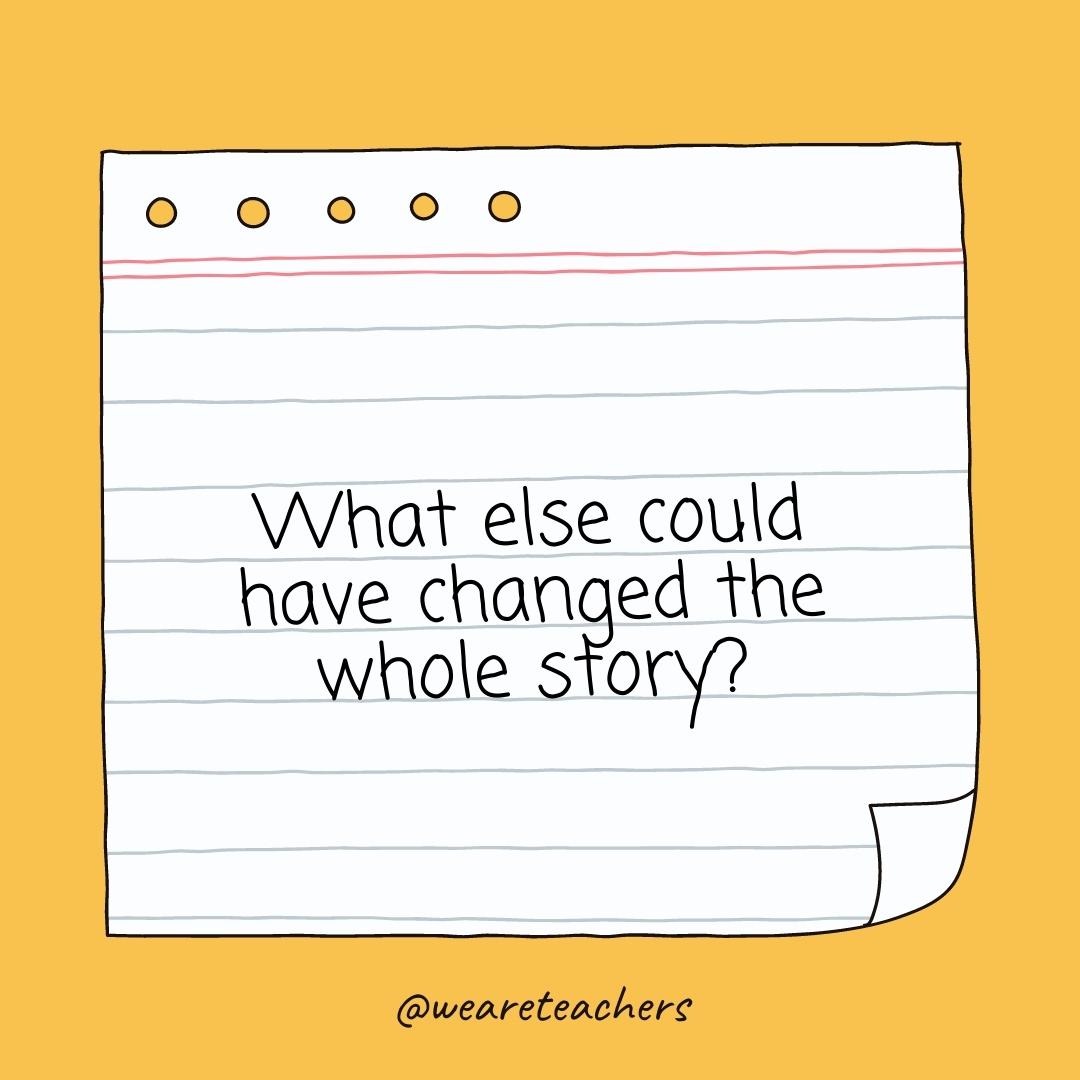
- Can you conclude?
- Would your position have been in that situation?
- Would happen if … ?
- Makes your position stronger?
- Was the turning point?
- Is the point of the question?
- Did it mean when … ?
- Is the other side of this argument?
- Was the purpose of … ?
- Does ______ mean?
- Is the problem you are trying to solve?
- Does the evidence say?
- Assumptions are you making?
- Is a better alternative?
- Are the strengths of the argument?
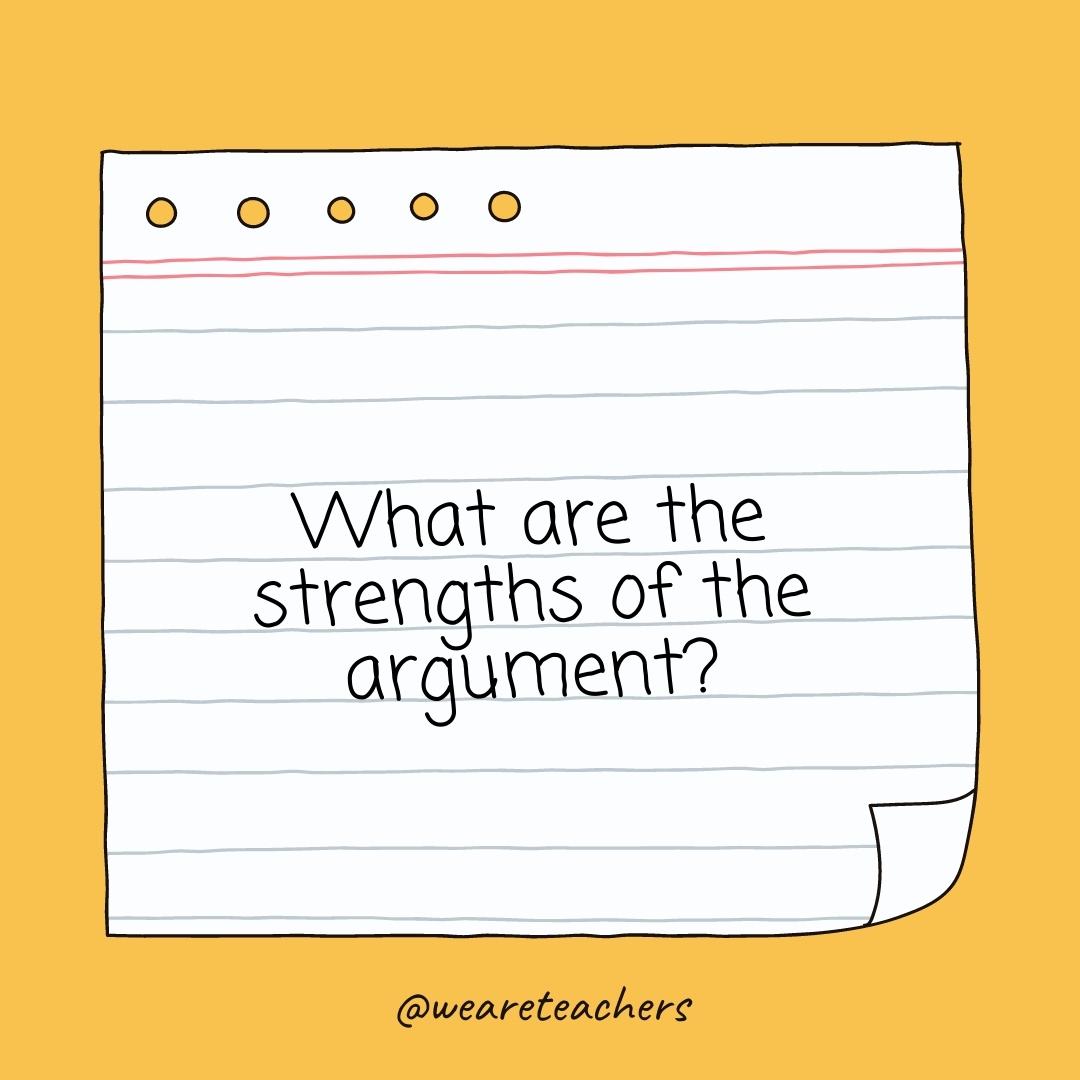
- Are the weaknesses of the argument?
- Is the difference between _______ and _______?
“Where” Critical Thinking Questions
Think about where the story is set and how it affects the actions. Plus, consider where and how you can learn more.
- Would this issue be a major problem?
- Are areas for improvement?
- Did the story change?
- Would you most often find this problem?

- Are there similar situations?
- Would you go to get answers to this problem?
- Can this be improved?
- Can you get more information?
- Will this idea take us?
“When” Critical Thinking Questions
Think about timing and the effect it has on the characters or people involved.
- Is this acceptable?
- Is this unacceptable?
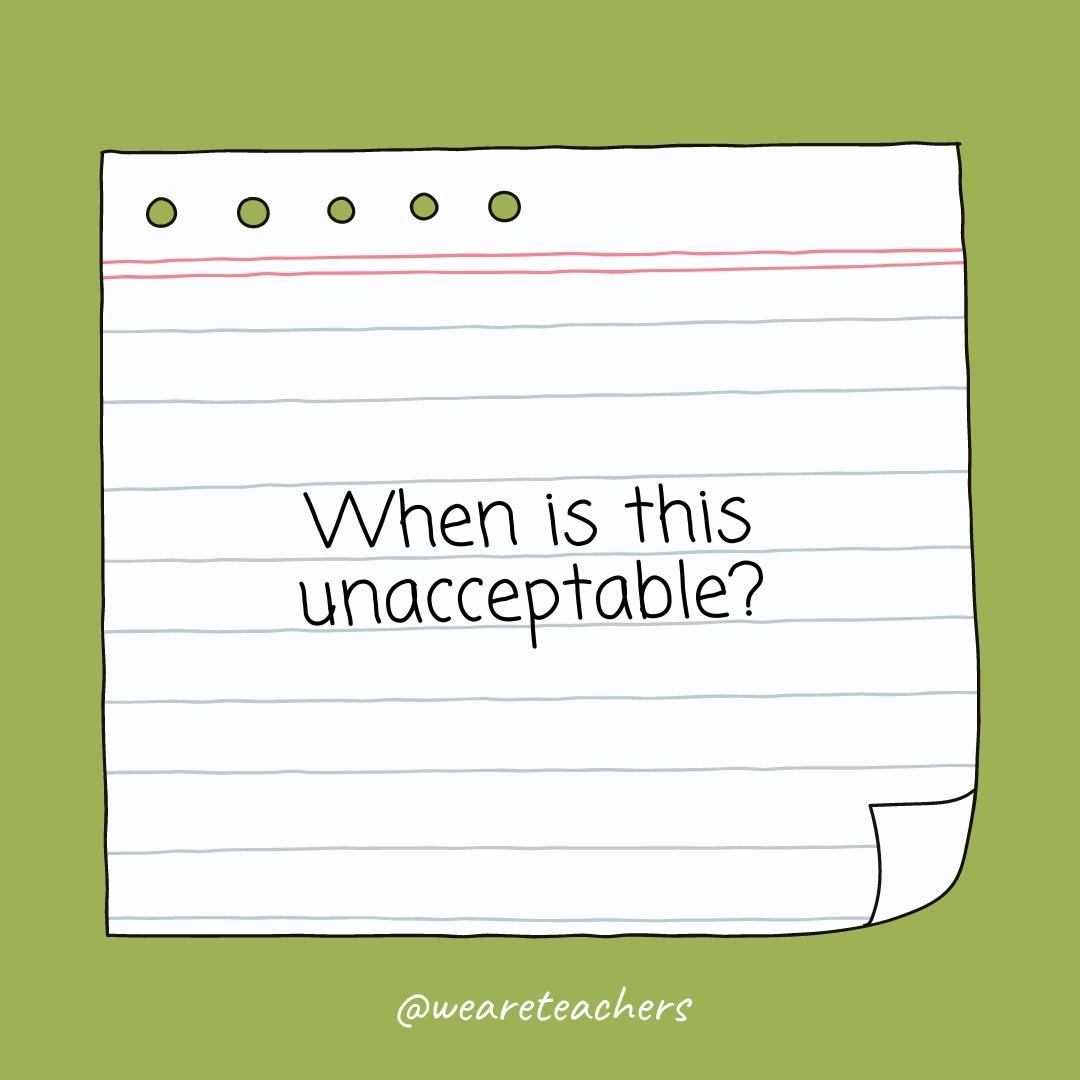
- Does this become a problem?
- Is the best time to take action?
- Will we be able to tell if it worked?
- Is it time to reassess?
- Should we ask for help?
- Is the best time to start?
- Is it time to stop?
- Would this benefit society?
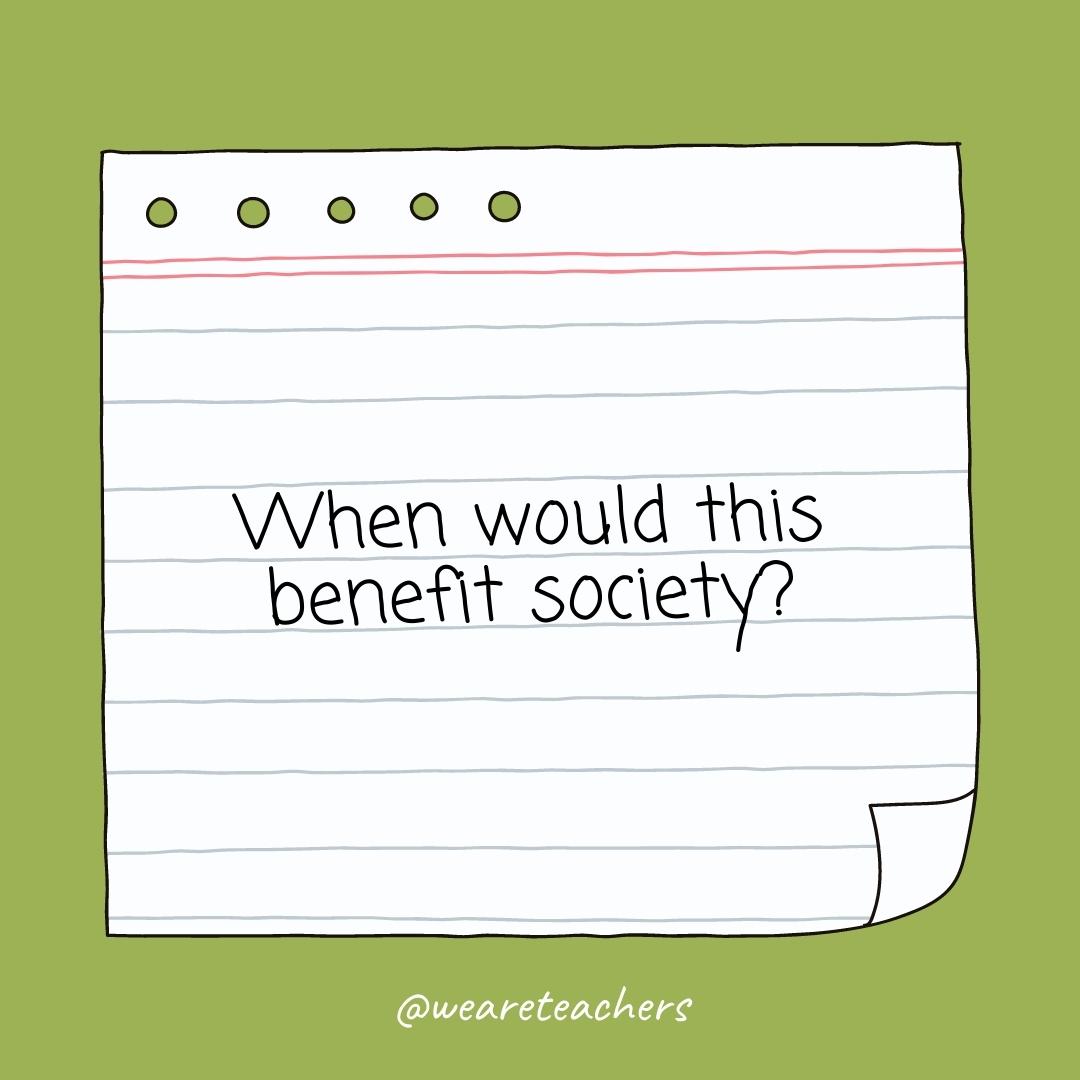
- Has this happened before?
“Why” Critical Thinking Questions
Asking “why” might be one of the most important parts of critical thinking. Exploring and understanding motivation helps develop empathy and make sense of difficult situations.
- Is _________ happening?
- Have we allowed this to happen?
- Should people care about this issue?
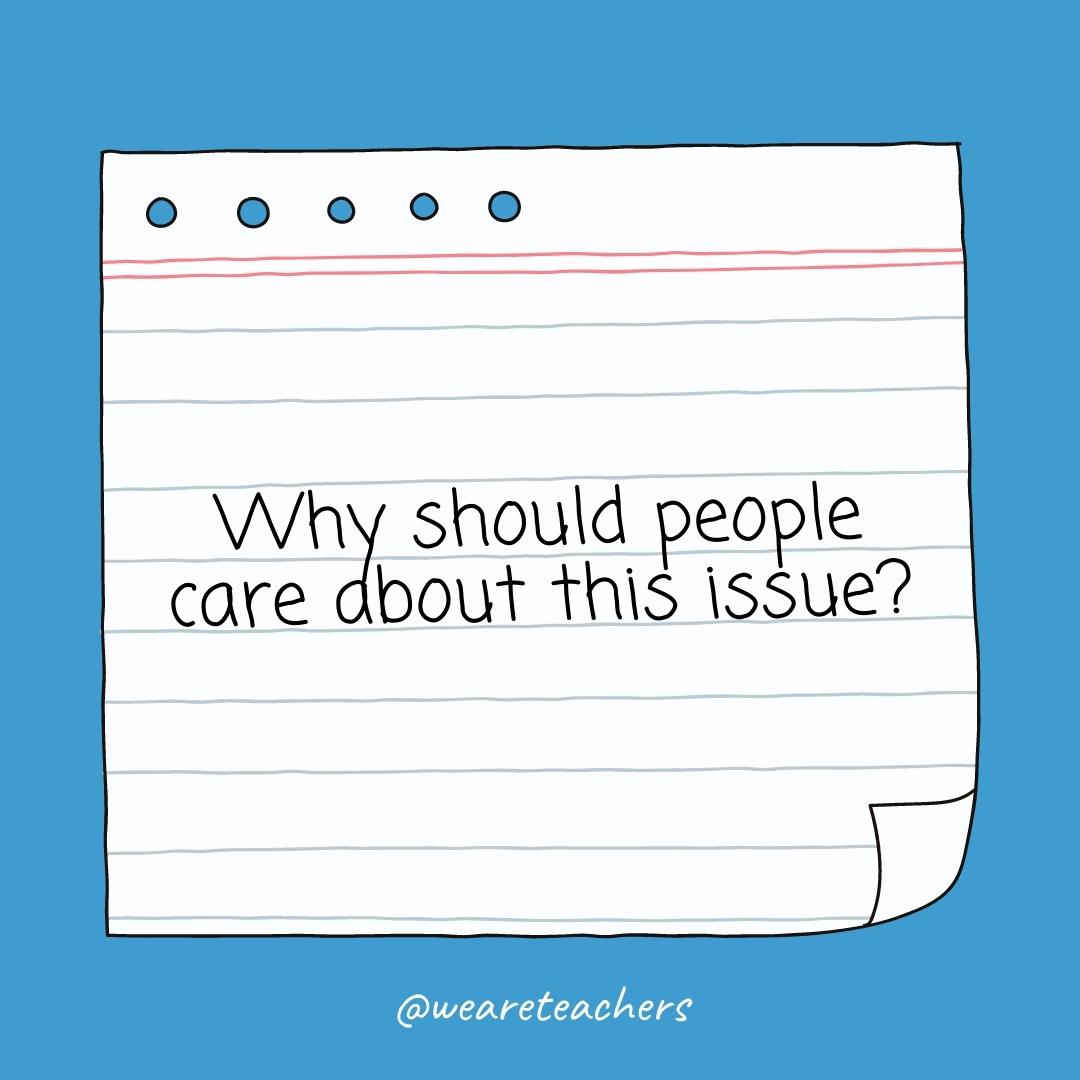
- Is this a problem?
- Did the character say … ?
- Did the character do … ?
- Is this relevant?
- Did the author write this?
- Did the author decide to … ?
- Is this important?
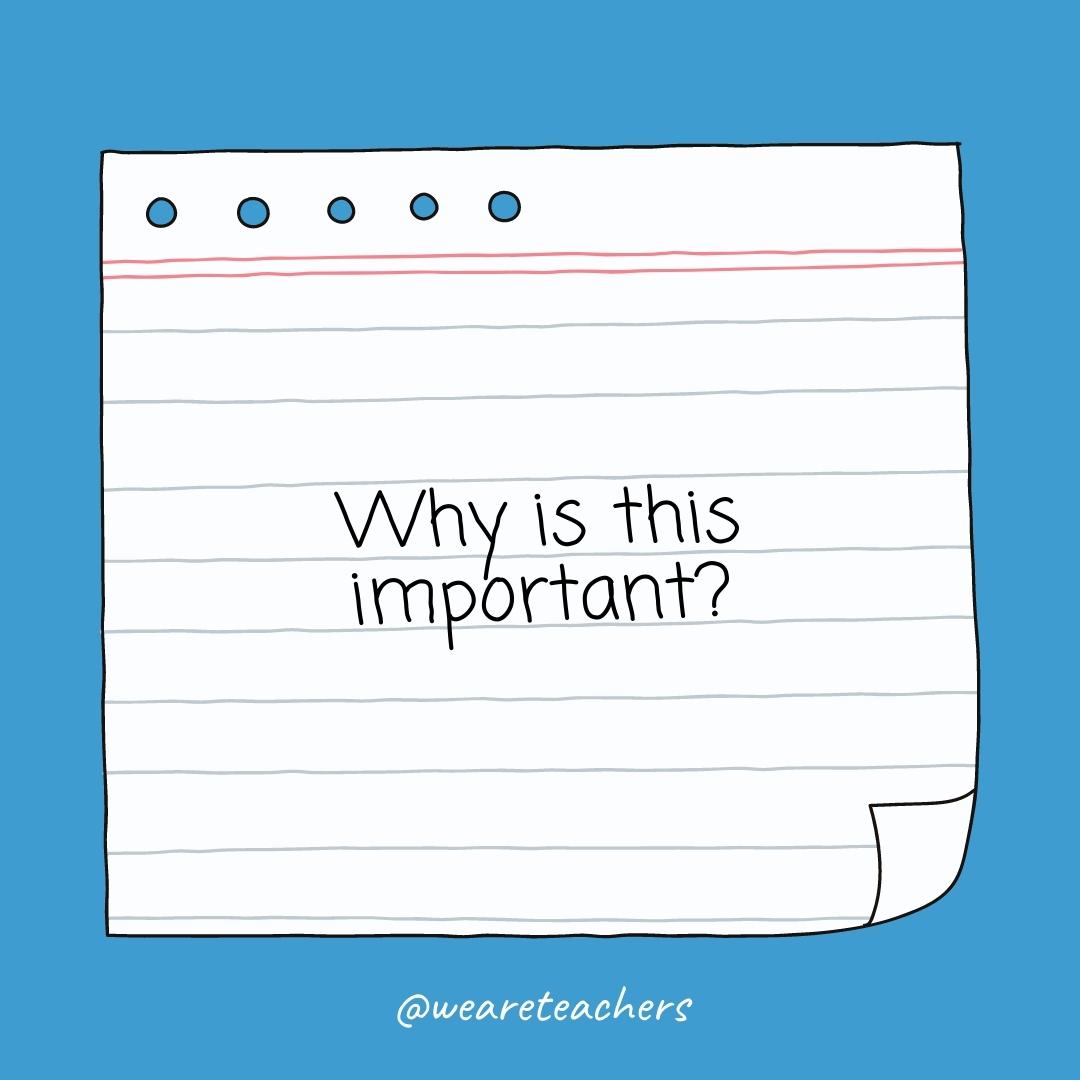
- Did that happen?
- Is it necessary?
- Do you think I (he, she, they) asked that question?
- Is that answer the best one?
- Do we need this today?
“How” Critical Thinking Questions
Use these questions to consider how things happen and whether change is possible.
- Do we know this is true?
- Does the language used affect the story?
- Would you solve … ?
- Is this different from other situations?
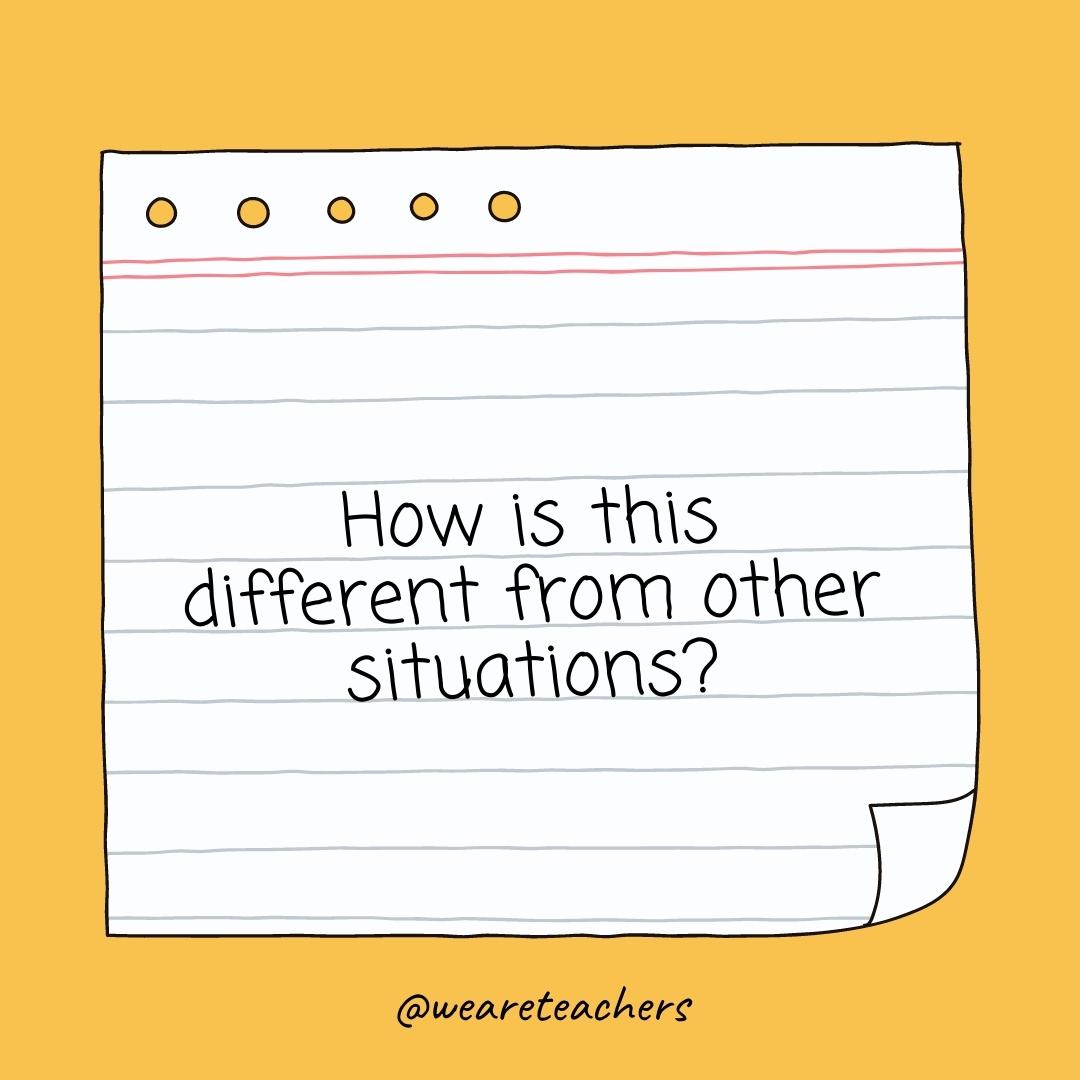
- Is this similar to … ?
- Would you use … ?
- Does the location affect the story?
- Could the story have ended differently?
- Does this work?
- Could this be harmful?
- Does this connect with what I already know?
- Else could this have been handled?
- Should they have responded?
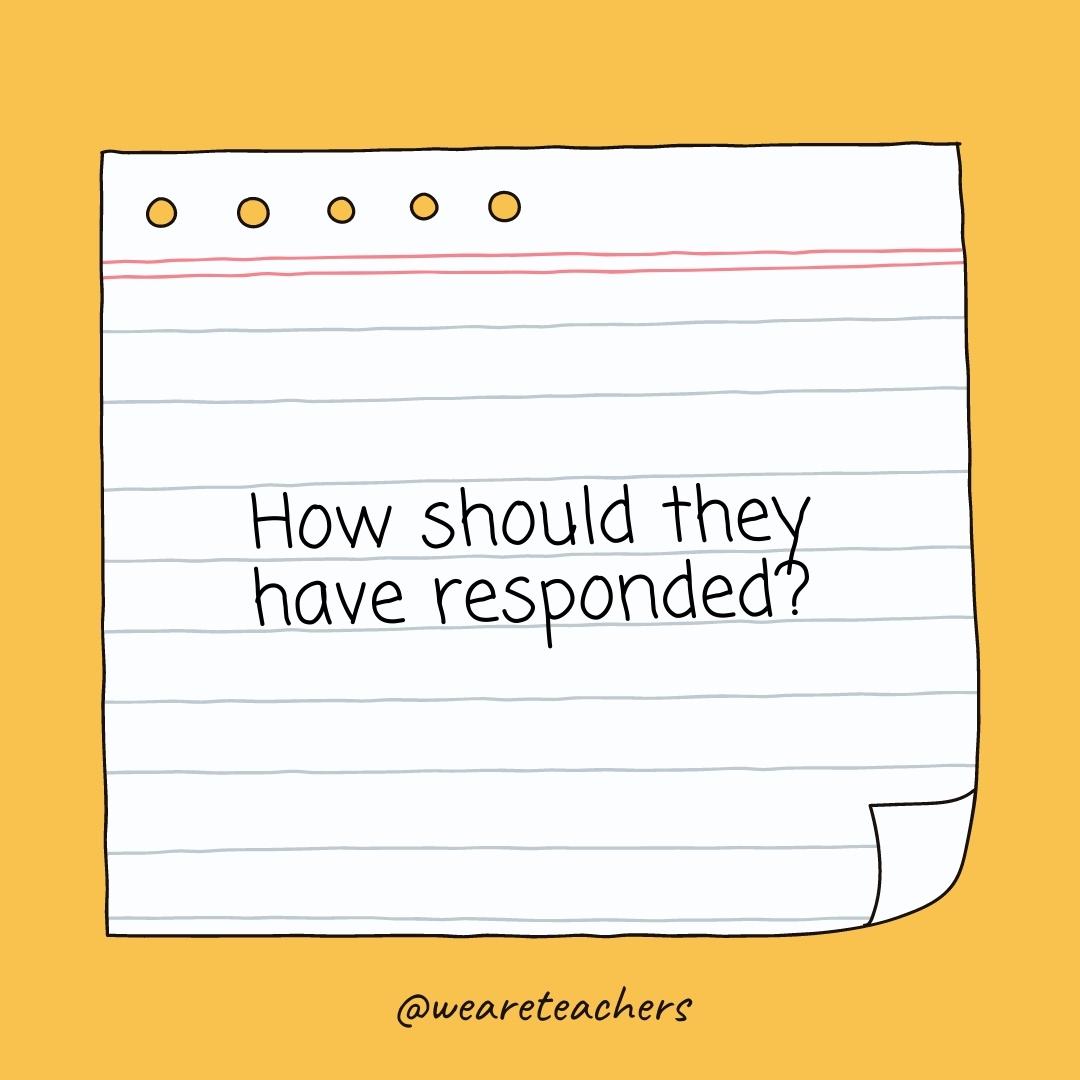
- Would you feel about … ?
- Does this change the outcome?
- Did you make that decision?
- Does this benefit you/others?
- Does this hurt you/others?
- Could this problem be avoided?
More Critical Thinking Questions
Here are more questions to help probe further and deepen understanding.
- Can you give me an example?
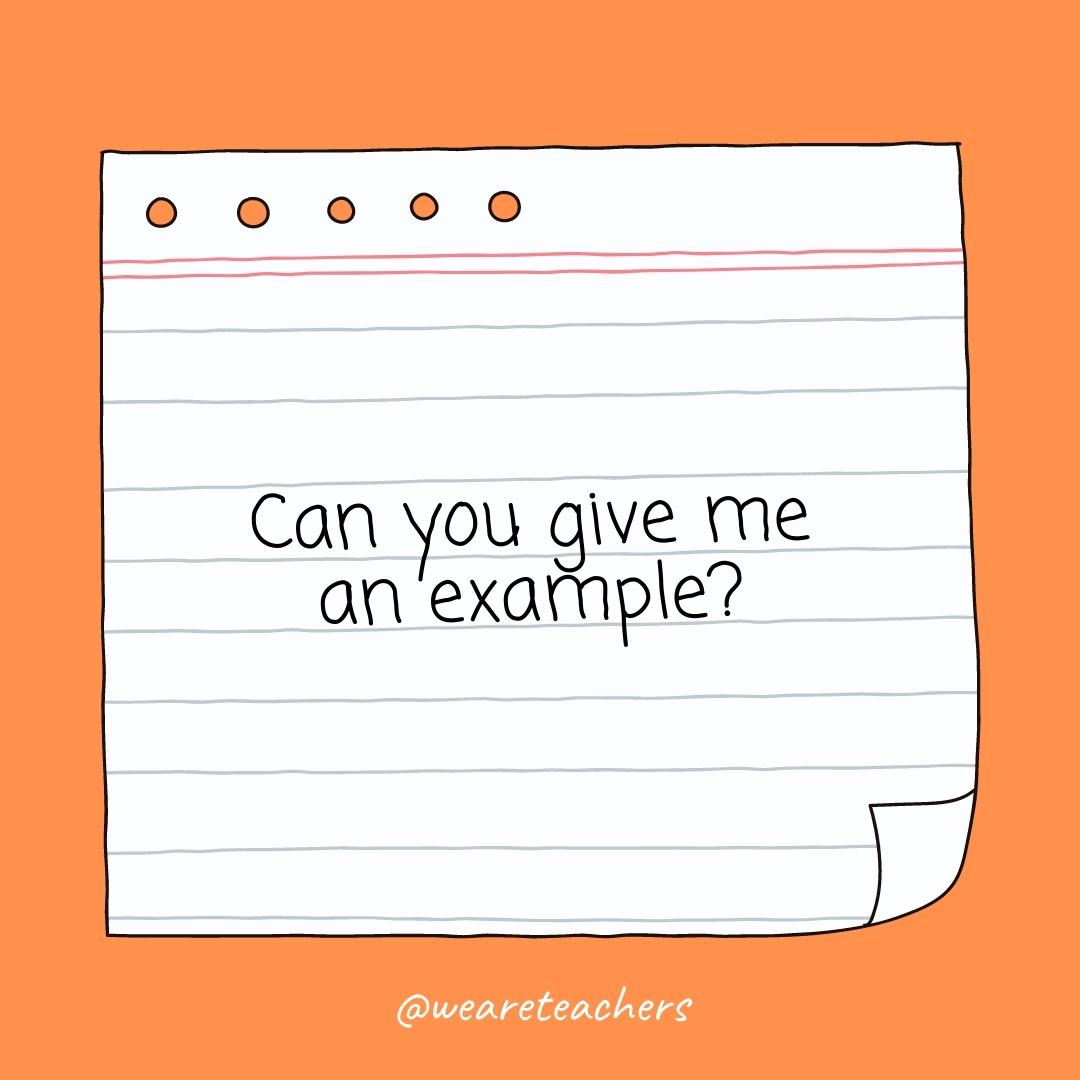
- Do you agree with … ?
- Can you compare this with … ?
- Can you defend the actions of … ?
- Could this be interpreted differently?
- Is the narrator reliable?
- Does it seem too good to be true?
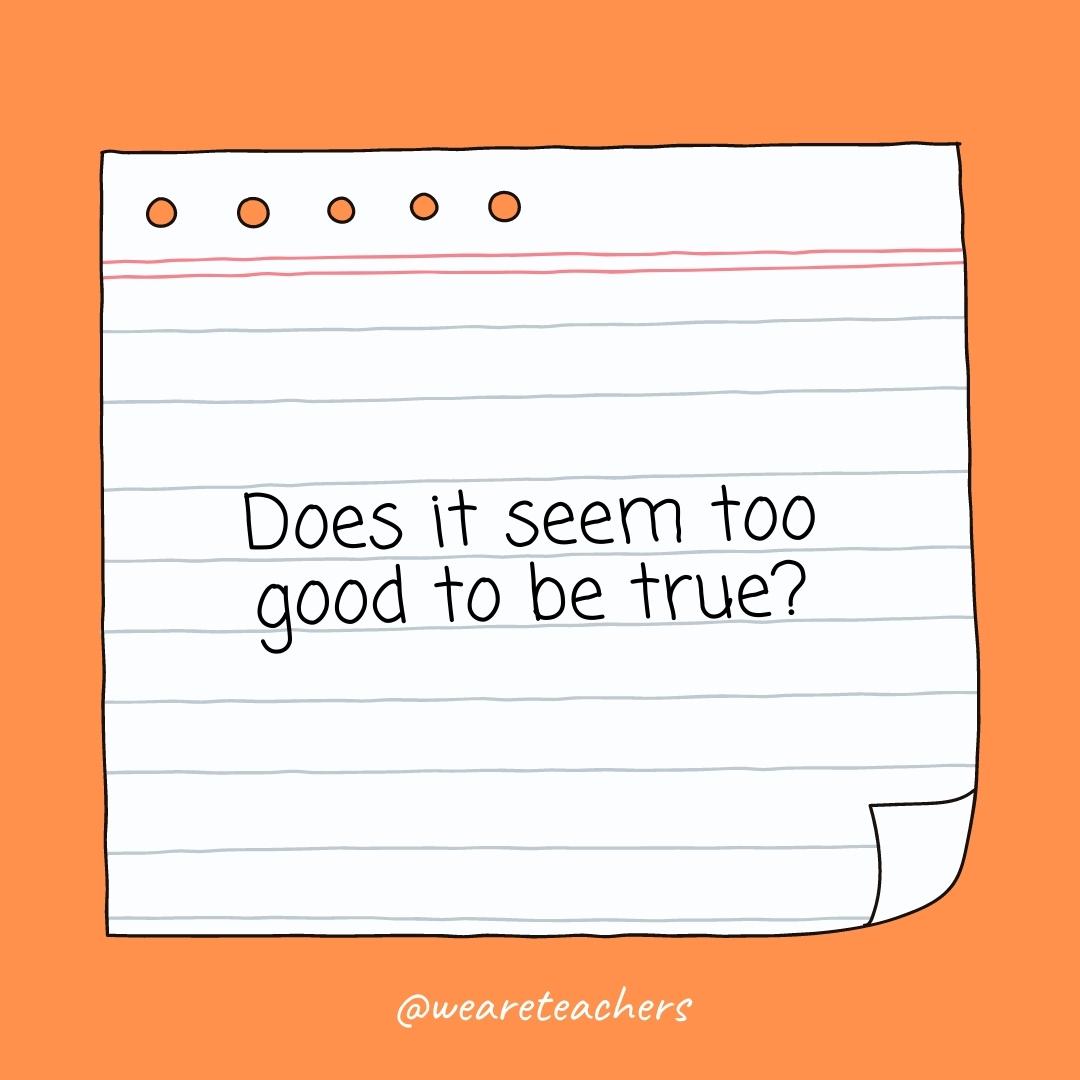
- Is ______ a fact or an opinion?
What are your favorite critical thinking questions? Come exchange ideas on the WeAreTeachers HELPLINE group on Facebook .
Plus, check out 10 tips for teaching kids to be awesome critical thinkers ., you might also like.

5 Critical Thinking Skills Every Kid Needs To Learn (And How To Teach Them)
Teach them to thoughtfully question the world around them. Continue Reading
Copyright © 2023. All rights reserved. 5335 Gate Parkway, Jacksonville, FL 32256
- WordPress.org
- Documentation
- Learn WordPress
- Members Newsfeed
16 Critical Thinking Questions For Students

Critical thinking is an essential skill that empowers students to think critically and make informed decisions. It encourages them to explore different perspectives, analyze information, and develop logical reasoning. To foster critical thinking skills, it is crucial to ask students thought-provoking questions that challenge their assumptions and encourage deeper analysis. Here are 16 critical thinking questions for students to enhance their problem-solving abilities:
- What evidence supports this argument?
- Can you identify any biases in this article?
- How does this relate to what we have learned previously?
- What alternative solutions can you propose to this problem?
- How might different cultures perceive this situation?
- What assumptions underlie this theory?
- How reliable is the source of this information?
- Can you identify any logical fallacies in this argument?
- What impact does this decision have on various stakeholders?
- What are the strengths and weaknesses of this argument?
- How might you approach this problem differently?
- Wha t ethical considerations need to be taken into account?
- Can you identify any gaps in the evidence provided?
- How does this concept apply to real-world situations?
- What are the potential consequences of this decision?
- How might you evaluate the credibility of this research?
By incorporating these critical thinking questions, educators can help students develop essential skills such as analyzing information, evaluating arguments, and problem-solving. Encouraging students to think critically will not only benefit their academic performance but also prepare them for success in various aspects of their lives.
Remember, critical thinking is a skill that can be nurtured and strengthened with practice. By guiding students to ask and answer these thought-provoking questions, educators can create a learning environment that fosters independent thinking and creativity.
Related Articles

The first year of teaching can be a thrilling and challenging experience…

Dice games can be a fantastic tool for teachers looking to incorporate…
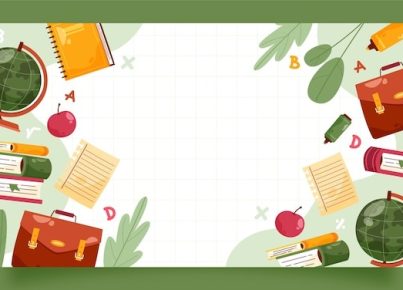
In the ever-changing landscape of education, teachers constantly find new ways to…

Pedagogue is a social media network where educators can learn and grow. It's a safe space where they can share advice, strategies, tools, hacks, resources, etc., and work together to improve their teaching skills and the academic performance of the students in their charge.
If you want to collaborate with educators from around the globe, facilitate remote learning, etc., sign up for a free account today and start making connections.
Pedagogue is Free Now, and Free Forever!
- New? Start Here
- Frequently Asked Questions
- Privacy Policy
- Terms of Service
- Registration
Don't you have an account? Register Now! it's really simple and you can start enjoying all the benefits!
We just sent you an Email. Please Open it up to activate your account.
I allow this website to collect and store submitted data.

19 Short Stories and Questions For Critical Thinking
Apr 2, 2024
There have been rumblings in different online teacher groups recently about replacing novels with short stories and informational articles in middle and high school English classrooms. I have to admit I was shocked when I first read the comments because I am a book lover at heart, but since then, I’ve considered that there are several pros and cons to this approach.
Short stories and other smaller texts can provide a briefer timeline to complete tasks, and this process is helpful when there is already SO MUCH curriculum to cover. Short stories and related activities can also be more engaging for our students because of the exposure to diverse voices and themes! Using short stories and lessons provides students with amazing choices to meet their needs and preferences!
On the other hand, incorporating mainly short stories and other shorter passages means students’ already-pressed attention spans (as a result of social media influences and pervasive sources of technology) are reinforced. Plus, students miss out on the more complex stories within longer pieces of fiction that are, dare I say, life-altering! A novel can provide opportunities for sustained reading and layers for analysis that shorter pieces of literature like short stories and related texts cannot offer.
Ultimately, no matter where you find yourself on the issue, I think we can all agree that short stories and their counterparts can be vital, effective, and helpful in the modern classroom!
Continue reading for 19 Short Stories and Questions For Critical Thinking!!
Need help with Test Prep ? Check out this FREE Pack of 3 Test Prep Activities to help students achieve success on standardized tests!

Table of Contents
19 Short Stories and Questions – Suggestions for Teaching Them
You don’t need to remove all novels to be able to include short stories and smaller passages like vignettes, articles, and narratives; there’s a time and place for all genres! But if you’re thinking about ways to include more short stories and fun activities, check out this list of 19 varied short stories and critical thinking questions as well as suggestions for teaching them in middle school and high school.
1. “The Most Dangerous Game”
“The Most Dangerous Game” is one of my absolute favorite short stories and overall plots to teach! This suspenseful short story by Richard Connell follows the harrowing ordeal of Sanger Rainsford, a skilled hunter who becomes the prey of a deranged aristocrat named General Zaroff. Stranded on Zaroff’s secluded island, Rainsford must outwit the cunning general in a deadly game of survival, where the stakes are life and death.
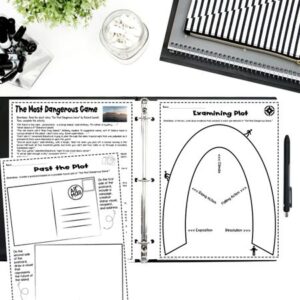
SUGGESTIONS FOR TEACHING:
- You could focus on the setting (description of time and place) and examine how the setting changes throughout the story.
- Students could learn about the plot (major events in the story) and list the major events and evidence as they read.
- Define foreshadowing (hints for what will happen by the end of the story) and encourage students to hypothesize about what will happen after every page.
- Analyze the character development (how a character changes over time) of Rainsford and highlight his traits/actions as you read along.
CRITICAL THINKING QUESTIONS:
- How does the setting contribute to the tension and suspense in the story?
- How does the author use foreshadowing? How does the author hint at the danger Rainford is facing?
- What inferences can you make about the main character and the changes he undergoes from the beginning to the end of the story?
If you want to teach plot elements and plot analysis , check out this lesson bundle for the story , which includes comprehension quizzes and a variety of activities!
2. “An Occurrence at Owl Creek Bridge”
Ambrose Bierce’s story is a gripping tale set during the American Civil War, where a Southern civilian named Peyton Farquhar faces execution by hanging after attempting to sabotage a Union railroad bridge. As Farquhar falls through the trapdoor, time seems to stretch, and he experiences a surreal moment, only to realize his grim reality.
Integrating historical texts with other short stories and passages like “An Occurrence at Owl Creek Bridge” will make history come more alive and relevant for our students!
- Teach about irony (when the opposite occurs from what is expected) and how it plays a role throughout the story.
- Explain the term characterization (how a character is depicted) by looking at direct and indirect references while reading with your students.
- Discuss the major themes (messages) of the story and how they connect to our modern era within a Socratic Seminar.
- How does the author use characterization to convey Peyton Farquhar’s thoughts, emotions, and motivations?
- What is the purpose of irony in this story? How does its use affect the reader’s interpretation and understanding of events?
- What is the significance in our contemporary/real world of the themes of the story, including reality and fantasy, the passage of time, and the consequences of actions?
Ensure students’ understanding of the story with this set of reading questions that are perfect for state test prep, too !
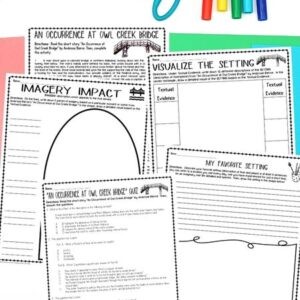
3. “The Masque of the Red Death”
This chilling tale from Edgar Allan Poe is set in a secluded abbey where Prince Prospero and his wealthy guests attempt to escape a deadly plague known as the Red Death. Despite their isolation efforts, the guests are confronted with their own mortality as a mysterious figure in a blood-red mask appears.
If you have not read any short stories and poems from Poe, this story is a perfect journey into the horror genre!
- The setting (description of time and place) plays a MAJOR role in the story, so following the Prince from room to room and highlighting the imagery (description that connects to the five senses) is very important when reading.
- If you have not introduced mood (emotion intended for the reader to experience), this story is PERFECT for delineating its progression from start to finish.
- As students read, you might guide them through identifying various examples of symbolism (object, person, or place that represents something else); each room, objects within, and the “antagonist” is symbolic in some way!
- How does the author convey the tone of the story? How would you, as the reader, describe the story’s mood?
- What role does the plot structure (focus on the different rooms) play in shaping the reader’s understanding of the story?
- What is the purpose of the symbolism in the story such as the clock and the masked figure?
Check out this EASY-TO-TEACH bundle , you can practice with your students, so they will feel more confident analyzing higher-level language in “The Masque of the Red Death!”
4. “The Cask of Amontillado”
Another chilling tale from Poe is the classic story “The Cask of Amontillado.” This one is set during Carnival in an unnamed Italian city. The plot centers on a man seeking revenge on a ‘friend’ he believes has insulted him. If your students are anything like mine, they will relish the ending particularly!
This is just one more of Poe’s short stories and tales that will capture the mind of every reader!
- As you plan for this short story, be sure to encourage your students to analyze the changing setting (description of time and place); following Fortunato from scene to scene will help your students track what is really going on.
- This story is the perfect moment to teach about dialogue (conversation within someone=internal and/or between someone and someone/thing else=external); Montresor certainly means more than what he SEEMS to say!
- You might also offer a mini-lesson on the 3 types of irony and how each plays a role in the story: verbal (when a person says the opposite of what is really intended), situational (an action occurs that is the opposite from what the reader expects), and dramatic (a character expects a result, but the opposite occurs and the audience can tell what will happen)!
- Describe Montresor. What are his motives and personality?
- What inferences can you make about Montresor’s mindset based on his dialogue?
- What is the purpose of the family’s motto and the carnival atmosphere?
Check out this Short Story Activity & Quiz Bundle for Edgar Allan Poe’s “The Cask of Amontillado,” which contains questions and answers modeled after various reading standardized tests as well as pre-quiz reading comprehension questions, graphic organizers, and a writing activity to get students thinking critically about this classic short story involving REVENGE!
Want 7 more teaching ideas for one of Poe’s epic short stories and questions to go with it? Click below!
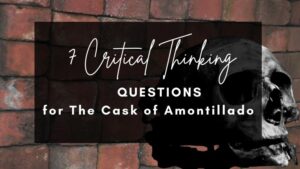
5. “To Build a Fire”
This story by Jack London describes the treacherous journey of a man through the harsh Yukon wilderness during extreme cold. Despite warnings and the company of a loyal dog, the man’s arrogance and underestimation of nature’s power lead to a tragic end.
Short stories and ideas related to survival in nature are still relevant today! Who knows when you might get lost on a hike or crashland in no man’s land?
- This story is PERFECT for a bit of literary analysis (examining the impact of various ideas, elements, or themes within a piece of literature); you could hone in on literary devices, characterization, theme, etc.!
- Integrating clips from survival shows will help students see connections to the world and extend their thinking by comparing (recognizing similarities) and contrasting (recognizing differences) varied experiences!
- Write a short narrative about surviving 24 hours in a different setting (description of time and place).
- How does the author use irony? Provide an example and explain.
- What real-world connections can be made between this story and our contemporary life?
- What is the story’s message about preparedness and respecting nature?
Grab these engaging short stories and activities to make teaching this Jack London story stress-free!
6. “The Cactus”
Told from the point of view of a young man at his former lover’s wedding, the narrator retells their story. Like most of O. Henry’s short stories and texts, this one has a twist that involves the titular cactus plant.
The ending will end in a bit of fun for your students!
- Introduce diction (word choice) and its impact within the story by hyperfocusing on specific words within the story . Students can look up definitions, locate synonyms, create their own sentences, replace the words, etc.
- Investigate twist endings (unexpected finish to a story); before reading the end of the story, ask students to guess why the girl “rejected” him. Some students may know the answer before reading it!
- Describe the main characters. What similarities and differences are evident? How does this affect the story’s action?
- What inferences can you make about Trysdale and his feelings about love and marriage?
- What are the real and symbolic meanings of the cactus?
This resource packed with questions and answers, graphic organizers, and writing activities is sure to get your students thinking about this love story driven by misconceptions.


7. “After Twenty Years”
This tale of friendship and betrayal focuses on the reunion of two old friends after twenty years apart on a New York City street corner. As they reminisce, something is revealed that demonstrates the reality of their bond as well as the choices they’ve made in life.
If you have not read O. Henry’s short stories and incorporated character analysis yet, this is your chance! The story is not long and can be completed in one to two class periods!
- Sometimes, we ask students to visualize (create a picture) in their minds, but why not give them the opportunity to use their artistic skills to draw the two characters?
- As students read, annotate for a description of each character; then, students can do a character analysis (investigation of the characters’ similarities and differences).
- What type of irony is used in the story? How does its use affect your interpretation and understanding of the story?
- How does the urban setting contribute to the mood of the story?
- What is the story’s message about friendship and loyalty?
Examine the links between loyalty and duty with this set of resources designed specifically for this O. Henry story.
8. “The Lottery”
“The Lottery” is the quintessential short story for middle school or high school English! Shirley Jackson’s “The Lottery” tells the story of an annual ritual that takes place in a seemingly idyllic town. When the townsfolk gather for the lottery drawing, a shocking turn of events demonstrates the dark side of human nature and their ties to (outdated) traditions.
- Introduce the terms suspense (uncertainty and/or excitement leading up to a major event) and tension (anxiety or uneasy feelings experienced by characters). While reading, identify evidence that relates to each of these concepts and chat/write about their impact on meaning and plot.
- Teach title (the name of the text) analysis. The title of “The Lottery” is perfect for teaching the impact of the title and audience expectations. Before reading, students may write what they believe the story will be about based on the title. After reading, students can complete a quick write responding to their previous expectations! You can do a text analysis for all short stories and poems!
- What role does the plot structure play in building suspense and tension? (Consider the revelation of the lottery’s ‘prize’ in particular.)
- What social commentary is being made through the story and its characters?
- Describe Mr. Summers, Tessie, and Old Man Warner. What does the story reveal about their role in the community and their feelings about the lottery?
Give yours elf a breath of fresh air with this NO PREP curriculum that integrates test prep within the teaching of literature by using Shirley Jackson’s quintessential story!
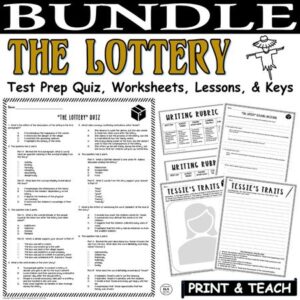
9. “The Pedestrian”
This Ray Bradbury story follows a lone walker in a futuristic society in which everyone else is consumed by technology, particularly the television. One evening, the walker encounters a police car that questions his unusual behavior and the end is quite unexpected! (Most of Bradbury’s short stories and texts connect to the future and technology in some way!)
- This story exemplifies Dystopian Literature (texts that include a supposedly perfect future society marred in some way by governmental or societal oppression). Using this story to introduce this type of literature is always fun for students because they will easily make connections to other dystopic short stories and poems!
- Teach about mood (the emotional impact of a story’s description/action). The goal is to get students to deepen their critical thinking skills by recognizing how the mood changes and the purpose for that change!
- How does the author use foreshadowing and suspense to build the mood of the story?
- What is the central theme of the story? How might it connect with our current world?
- What similes and metaphors does Bradbury use to describe the community and its members? What is notable about these comparisons?
With this resource about Bradbury’s “The Pedestrian,” you can just print and teach the lesson and activities with EASE!
10. “The Gift of the Magi”
This 1905 story by O. Henry relays a tale about a couple struggling to make ends meet. Throughout the story, they both figure out gifts to buy one another for Christmas and realize what love truly means!
- Review character traits (how a character is depicted internally and externally). Log the traits of each character within the story and how they are important to the meaning of the story.
- Extend (move beyond the text) critical thinking skills by encouraging students to think and write about other people. If they had $1,000 to spend on someone else, how would they spend the money and why?
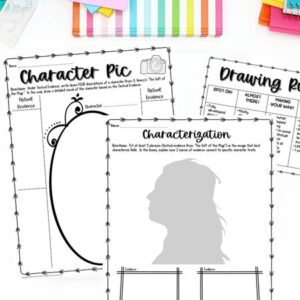
- How would you describe Della and Jim, and their relationship?
- What values do the characters have, when you consider their actions and decisions?
- Explain how dramatic irony is used in the story. Is it necessary? Is it effective? Why or why not?
This tale is a great addition to your short stories and questions unit around the winter holidays! Save yourself time at that time of the year with this lesson bundle .
11. “The Monkey’s Paw”
“The Monkey’s Paw” is a classic horror story about the White family who come into possession of a mystical monkey’s paw that grants three wishes. Despite warnings, they use it and then face devastating consequences as a result.
- Teach about the elements of the horror/suspense genre (Ex. Scary movies are typically dark, stormy, surprising, morbid, etc.).
- Create a thematic statement (message relayed by the text in a complete sentence). There is no perfectly created theme (message) unless it is directly stated by the author; however, students can create a theme by supporting their ideas with evidence from the story!
- What is the main theme of the story? Or how does the author communicate the themes of greed or fate? Is one stronger than the other?
- Are Mr. and Mrs. White more alike or different from one another? How do you know?
- Should we be afraid of the unknown? What message does the story share? Do you agree or disagree?
Examine W.W. Jacobs’ classic story with this set of questions and answers along with rigorous reading and writing activities . While it is ideal for a spooky season, the story is valuable for its ability to hook readers any time of year!
12. “Lamb to the Slaughter”
This classic story with a killer plot twist is about a woman who kills her husband and gets away with murder thanks to cooking a leg of lamb!
- You could introduce the plot elements (exposition, rising action, climax, falling action, resolution), encourage students to identify major events to fit each element and write down textual evidence to support their ideas.
- Complete a film analysis (examination of film techniques and their effects) to compare/contrast the short story with the classic Alfred Hitchcock television episode.
- What is Mary Maloney’s state of mind? Does it remain the same or does it change throughout the story? Explain.
- Is the resolution of the story satisfying? Why or why not? Why do you think the author ended it as he did?
- How does irony contribute to the theme of deception in the story? Explain.
Spice up your middle school English or high school English class with this short stories and activities bundle for Dahl’s famous story!
13. “The Tell-Tale Heart”
Poe’s classic psychological thriller is narrated by an unnamed protagonist who insists on their sanity while recounting how they murdered an old man. The narrator is haunted by the sound of the victim’s beating heart, which ultimately drives him to confess to the crime despite not originally being a suspect.
- Teach symbolism (object, person, or place that represents something else) by focusing on the heart and eye . The author used these symbols in various ways!
- Investigate psychology (the study of the human mind) as a part of the story. Determine what is fact and what is fiction within the narrator’s mind.
- What does the story reveal about the human psyche?
- What is the deeper meaning of the two key symbols in the story – the beating heart and the eye of the old man?
- What role do the narrator’s inner thoughts play in the development of the plot?
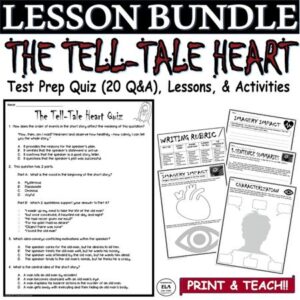
This Short Story Comprehension Bundle offers quick (and effective!) ways to assess students’ learning and understanding of the story. It’s easy to use and will no doubt save you time too!
14. “The Scarlet Ibis”
Emotional short stories and their counterparts have a place as well in English classrooms! This short story by James Hurst about two brothers is a heartbreaking must-read. Through flashbacks, the unnamed narrator tells the life story of his younger sickly brother William Armstrong, who is nicknamed Doodle. And the end…well, you’ll see.
- Define and explain the purpose of a flashback (referring back to the past within a story). Think about the implications of never thinking back on the past or always thinking about the past.
- Complete a comparison chart between Doodle and the Ibis as you read along. Then, students can create a visual of each after they have ready by using their own evidence!
- What is the meaning of the story’s title and the presence of a scarlet ibis in the story?
- What is the central theme of the story? How do the events of the story support this chosen theme?
- How does the author use personification for the storm? What effect does this have on the story?
This flexible resource features critical thinking questions and answers as well as writing and reading activities for students to explore Hurst’s heartbreaking story.
15. “The Veldt”
This science fiction story by Ray Bradbury was first published as “The World the Children Made” and it is quite fitting as a title! The story focuses on a futuristic world in which a video screen can be controlled and it turns out to be more than simple virtual reality! By the story’s conclusion, the world the children made is the downfall of their parents.
- Compare and contrast “The Veldt” with “The Pedestrian,” two short stories and dystopic texts by Ray Bradbury. Analyze the similarities and differences of both short stories and create a thematic statement that connects to both texts!
- Make connections to our current reality in the 21st century. Locate research about the implications of technology on young people and integrate this information as you discuss this short story.
- How does the author address the theme of technology versus humanity in the story? Do you agree with this commentary? Why or why not?
- How does the nursery reflect the personalities of Wendy and Peter in this story?
- Do you know the story of Peter Pan and his friend Wendy? What connections can you make between it and this story by Ray Bradbury?
Ray Bradbury’s classic short stories and similar passages are the BEST to teach in middle and high school English! With so much to dive into, they are sure to be a hit with your students. Grab this set of activities to extend your students’ engagement with rigorous reading and writing activities about “The Veldt.”
16. “The Necklace”
A woman who longs for a life of luxury and elegance beyond her means faces consequences when she loses a borrowed necklace. Guy de Maupassant’s story ends with a twist that has the reader question the value of material possessions.
- I love comparing this short story with O. Henry’s “The Gift of the Magi.” You might choose to focus on the theme, characterization, setting, etc.
- Summarize (writing about the main idea with details) each chunk of the story as you read with your students. Instead of asking students to write a paragraph, you could ask students to create each summary in only one sentence.
- The story explores vanity, deception, and the consequences of striving for social status. Which theme do you think is the most important? Explain with support from the story.
- Is Mathilde Loisel a likable character? Does this change during the story? Does it matter if the reader likes her? Why or why not?
- What clues does the author provide throughout the story that foreshadow the twist at the story’s end?
Focus on the standards with this Short Story Lesson Bundle for “The Necklace” by Guy de Maupassant!
Need help with implementing activities for “The Necklace?” See below!
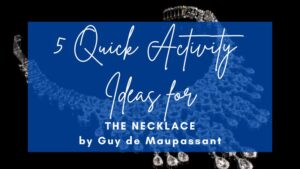
17. “A Vendetta”
Guy de Maupassant’s late-19th-century story is all about REVENGE. A mother is obsessed with creating a plan to avenge her son’s murder and she then puts the plan into action with a morbid outcome.
- There are so many texts that involve REVENGE! Why not use this concept as a focus for a thematic unit (texts linked to a similar concept and/or message)? You could read “A Poison Tree,” “The Cask of Amontillado,” and “Lamb to the Slaughter” as well as “A Vendetta” with the intention of writing about all 4 for a comparison/contrast paper, presentation, or seminar.
- Analyze the development (how a character changes over time) of the mother and the dog throughout the story; you might annotate for similarities and differences as well as their motivations!
- What comment is the story making about the nature (or need) for justice? Do you agree or disagree? Why or why not?
- What similes and metaphors does the author use to communicate the main character’s feelings about the vendetta?
- How does the author use details to explain the main character’s thoughts, feelings, and motivation?
Add these activities for this lesser-known work to your short story plans. It’s sure to keep things fresh for your short stories and activities unit!
18. “Thank You, Ma’am” (also known as “Thank You, M’am”)
This heartfelt story by Langston Hughes tells the story of Luella, an older woman in the neighborhood, who is nearly robbed by a young man named Roger. In response to Roger, Luella brings him back to her home and treats him with an abundance of kindness, which has a profound effect on Roger.
This tale is at the top of the list for the BEST short stories and passages for upper middle and younger high school students!
- Introduce perspective and/or point of view (how a story is told: 1st, 2nd, 3rd omniscient, 3rd limited, 3rd objective). Students might rewrite the story from another perspective or extend the story using the perspective of one of the main characters.
- Review plot elements with a focus on the exposition (introduction to the characters, setting, and conflict), climax (highest point of interest/turning point of the story), and resolution (how the story is concluded and/or resolved in some way.) You could assign an activity surrounding each concept: visualization of the scene, a journal response to the event, or a short response focused on how the element is important to the overall theme!
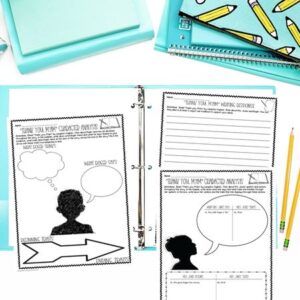
- Do you believe in second chances? What does the story say about second chances?
- How might the climax of the story also be seen as the turning point in Roger’s life?
- How would you describe Mrs. Luella Bates Washington Jones? Are her actions expected or unexpected in the story? Consider from Roger’s and the reader’s point of view.
Click to check out all of the details for this BUNDLE with differentiated options , which includes a Test Prep Quiz (with varied options), Venn Diagrams, Graphic Organizers, and Writing Responses!!
19. “Click Clack the Rattle Bag”
This short story by Neil Gaiman is creepy and fun in the best ways possible! The narrator is taking care of his girlfriend’s little brother and walking him to bed when the child asks for a story. Instead of the narrator sharing a story, the boy shares about the Click Clacks who drink their prey and leave behind rattling bodies. The end is too good to be missed!
Short stories and plots like those in “Click Clack the Rattle Bag” will most certainly engage even your most struggling learners!
- We all know that test prep can be tough as many reading passages are, well, boring! Why not accomplish some test prep with your students and incorporate 5 standardized test-related questions ? You could focus on theme, structure, order of events, characterization, etc.!
- Help students make inferences (acknowledging and hypothesizing about the impact of details that are not directly referenced or stated) as the scene moves along. Students can analyze the change in the setting, the little boy himself, the story the boy is telling, and specific phrases from the story.
- What details in the story contribute to its eerie atmosphere or mood? Or what figurative language devices does Neil Gaiman use to create a sense of suspense in the story?
- How does the author use ambiguity in the story? Is it effective or not? Explain.
- What inferences can you make about the relationship between the narrator and the young boy?
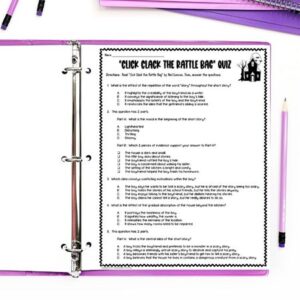
This “Click Clack the Rattle Bag” Quiz Pack for middle and high school students uses the Common Core standards and contains questions and answers modeled after various state standardized tests! Make teaching this amazing short story by Neil Gaiman SIMPLE & EASY!
Why should we incorporate more short stories and activities in our teaching?
While I would never advocate replacing all novels with short stories and smaller texts, there is still something to be said about spending quality time with short stories and excerpts.
Including short stories and standards-based activities is an ideal option to improve reading comprehension and develop skills, especially in middle and high school English classes!
SHORT STORIES AND ACTIVITIES RESOURCES:
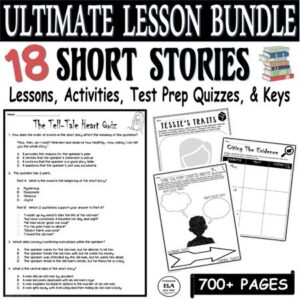
This Short Stories and Test Prep Questions ULTIMATE BUNDLE with Lessons, Quizzes, and Activities uses the Common Core standards with reading comprehension QUESTIONS and ANSWERS for 18 short stories such as “The Most Dangerous Game,” “The Monkey’s Paw,” “The Tell-Tale Heart,” “After Twenty Years,” “The Gift of the Magi,” “The Veldt,” “The Lottery,” “The Pedestrian,” etc. modeled after various state reading exams.
Make teaching short stories and activities SIMPLE & EASY!
Just PRINT & TEACH with engaging short stories and lessons!!
Need more fun ideas for teaching short stories and corresponding activities? Check out my store Kristin Menke-Integrated ELA Test Prep !

Hi, I’m KRISTIN!
I primarily focus on integrating multiple disciplines and subjects. The goal is to make teaching simplified and effective!
Let's Connect
- Follow Follow
Click below to download “13 Simple Strategies to make test prep a breeze!”
- Create A Quiz
- Relationship
- Personality
- Harry Potter
- Online Exam
- Entertainment
- Training Maker
- Survey Maker
- Brain Games
- ProProfs.com
Critical Thinking Quizzes, Questions & Answers
Top trending quizzes.
Popular Topics
Recent quizzes.
« Previous 1 2 Next »

- Productivity
- Thoughtful learning
Become a better critical thinker with these 7 critical thinking exercises

Critical thinking is a skill you can use in any situation. Whether you're a student, entrepreneur, or business executive, critical thinking can help you make better decisions and solve problems.
But learning critical thinking skills isn't always an easy task. Many tools, techniques, and strategies are available, and choosing the right one can be challenging. Vague suggestions on the internet like "read more" aren't very helpful, and elaborate business examples don’t apply to many of us.
As average problem-solvers, we need actionable thinking exercises to improve our critical thinking skills and enhance our thinking processes. Regularly performing exercises that specifically stretch our decision-making and reasoning skills is the most effective method of improving our thinking abilities.
This article will explore several exercises that will help you develop critical thinking skills. Whether you are preparing for an exam, making an influential decision for your business, or going about your daily life, these fun activities can build your reasoning skills and creative problem-solving abilities.
Boost your logical thinking skills and start practicing a critical mindset with these 10 critical thinking exercises.
A Quick Look at Critical Thinking
As a thoughtful learner, you likely already understand the basics of critical thinking, but here's a quick refresher.
Critical thinking involves analyzing problems or issues objectively and rationally. Critical thinkers are able to understand their own biases and assumptions, as well as those of others. They’re also able to see the world from a different point of view and understand how their experiences impact their thinking.
Developing critical thinking skills is essential because it allows us to see things from multiple perspectives, identify biases and errors in reasoning, and be open to possible solutions. Making informed decisions is easier when we have a better understanding of the world around us.
Why We Need to Practice Critical Thinking

We aren't born with critical thinking skills, and they don’t naturally develop beyond survival-level thinking. To master critical thinking, we must practice it and develop it over time.
However, learning to think critically isn't as easy as learning to ride a bicycle. There aren't any step-by-step procedures to follow or supportive guides to fall back on, and it is not taught in public schools consistently or reliably. To ensure students' success, teachers must know higher-order thinking skills (HOTS) and how to teach them, research says.
Unfortunately, although teachers understand the importance of HOTS and attempt to teach it, studies show that their capacity to measure students' HOTS is low. Educator and author Dr. Kulvarn Atwal says, "It seems that we are becoming successful at producing students who are able to jump through hoops and pass tests."
As critical thinking skills become more important in higher grades, some students find it challenging to understand the concept of critical thinking. To develop necessary thinking skills, we must set aside our assumptions and beliefs. This allows us to explore and question topics from a "blank page" point of view and distinguish fact from opinion.

Be the first to try it out!
We're developing ABLE, a powerful tool for building your personal knowledge, capturing information from the web, conducting research, taking notes, and writing content.
7 Critical Thinking Exercises To Improve Your Critical Thinking Skills

The good news is that by assessing, analyzing, and evaluating our thought processes, we can improve our skills. Critical thinking exercises are key to this improvement. Our critical thinking builds and improves with regular practice, just like a muscle that gets stronger with use.
If you want to become a better critical thinker , here are some critical thinking exercises to try:
Exercise #1: The Ladder of Inference
You can exercise your critical thinking skills by using the Ladder of Inference model . This thinking model was developed by renowned organizational psychologist Chris Argyris. Each rung on the ladder of inference represents a step you take to arrive at your conclusions.
The decision-making process starts when we are faced with a problem or situation. As soon as we observe something problematic or important, we presume what is causing it, and then we use that assumption to draw conclusions. Based on those conclusions, we take action.
For example, say you're at a party and see a friend across the room. You catch their eye and wave, but they turn and walk away. Using the ladder, you might climb the rungs as follows:
- Observe that your friend walked away.
- Select a few details of the situation, including your wave and your assumption that they saw you.
- Meaning is attached based on the environment, making you think your friend must have other people to talk to at the party.
- Assumptions are made based on that meaning, assuming that means your friend doesn’t like you as much as them.
- Conclusions are drawn from the assumption, and you determine that your friend must be mad at you or doesn't want you to be at the party.
- Beliefs are formed, making you think you're not welcome.
- Action is taken, and you leave the party.
In this example, you started with a situation (someone walking away at a crowded party) and made a series of inferences to arrive at a conclusion (that the person is mad at you and doesn't want you there).
The Ladder of Inference can be a helpful tool to frame your thinking because it encourages you to examine each step of your thought process and avoid jumping to conclusions. It's easy to make assumptions without realizing it, as in this scene. Perhaps your friend never even saw you wave from across the crowded room.
Exercise #2: The Five Whys
The "Five Whys" technique is an analytical skill that can help you uncover the source of a problem. The activity was created by Sakichi Toyoda, the founder of Toyota, and consists of repeatedly asking “why?” when a problem is encountered to determine its root cause.
This exercise can be difficult because knowing if you've discovered the source of your problem is challenging. The "five" in "Five Whys" is just a guideline — you may need to ask more. When you can't ask anything else, and your response is related to the original issue, you've probably arrived at the end.
Even if you need several rounds of questioning, just keep going. The important part that helps you practice critical thinking is the process of asking "why?" and uncovering the deeper issues affecting the situation.
For instance, say you're trying to figure out why your computer keeps crashing.
- You ask " why ," and the answer is that there's a software problem.
- Why? Because the computer keeps running out of memory.
- Why? Because too many programs are running at the same time.
- Why? Because too many browser tabs are open .
- Why? Because multitasking is fragmenting your focus, you're doing too many things at once.
In this example, working through the "why's" revealed the underlying cause. As a result, you can find the best solution, which is concentrating on just one thing at a time.
Exercise #3: Inversion

Inversion is another critical thinking exercise that you can use in any situation. Inversion is sort of like taking on the role of the devil's advocate. In this exercise, adopt the opposite view of whatever issue you're exploring and consider the potential arguments for that side. This will help broaden your critical thinking skills and enable you to see other perspectives on a situation or topic more clearly.
For example, let's say you're thinking about starting your own business. Using inversion, you would explore all of the potential arguments for why starting your own business is bad. This might include concerns like:
- You could end up in debt.
- The business might fail.
- It's a lot of work.
- You might not have time for anything else.
By exploring these potentially adverse outcomes, you can identify the potential risks involved in starting your own business and make a more sound decision. You might realize that now is not the right time for you to become an entrepreneur. And if you do start the company, you'll be better prepared to deal with the issues you identified when they occur.
Exercise #4: Argument Mapping
Argument mapping can be a beneficial exercise for enhancing critical thinking skills. Like mind mapping, argument mapping is a method of visually representing an argument's structure. It helps analyze and evaluate ideas as well as develop new ones.
In critical thinking textbooks, argument diagramming is often presented to introduce students to argument constructions. It can be an effective way to build mental templates or schema for argument structures, which researchers think may make critical evaluation easier .
Argument maps typically include the following:
- Conclusion: What is being argued for or against
- Premises: The reasons given to support the conclusion
- Inferences: The connections made between the premises and conclusion
The argument map should be as clear and concise as possible, with a single word or phrase representing each element. This will help you make connections more easily. After the map is completed, you can use it to identify any weak points in the argument. If any areas aren't well-supported, additional premises can be added.
Argument mapping can be applied to any situation that requires critical thinking skills. The more time you take to map out an argument, the better you'll understand how the pieces fit together. Ultimately, this will help you think more creatively and critically, and make more informed decisions.
Exercise #5: Opinion vs. Fact
Critical thinking activities that focus on opinions and facts are particularly valuable and relevant new learning opportunities. Our constantly-connected world makes it easy to confuse opinions and facts , especially with sensationalist news articles and click-bait headlines.
How can you tell a fact from an opinion? Facts are generally objective and established, whereas opinions are subjective and unproven. For example, "the cloud is in the air" is a fact. "That dress looks good on you" is an opinion.
Practice your critical thinking skills by reading or listening to the news. See if you can identify when someone is stating an opinion rather than a fact. Ask yourself the following questions:
- Who is saying what? What reasons might be behind their statements?
- Does the claim make sense? Who would disagree with it and why?
- How can you tell if the data is reliable? Can it be fact-checked? Has it been shared by other credible publishers?
- How do you know whether or not the presenter is biased? What kind of language is being used?
This powerful exercise can train your mind to start asking questions whenever presented with a new claim. This will help you think critically about the information you're taking in and question what you're hearing before accepting it as truth.
Exercise #6: Autonomy of an Object
In her book " The Critical Thinking Tool Kit ," Dr. Marlene Caroselli describes a critical thinking exercise called "Living Problems, Lively Solutions." This exercise uses the autonomy of an object as a problem-solving tool to find a possible solution.
To do this, you'll personify your problem and place it in another context — a different time or place. This allows you to uncover unique solutions to the problem that might be tied to your mental associations with that setting.
For example, if your problem is poor time management , you might personify the issue as a thief of your time. The idea of a thief could make you think of jail, which might prompt thoughts of locking up specific distractions in your life. The idea of jail could also make you think of guards and lead you to the possible solution of checking in with an accountability buddy who can make sure you're sticking to your schedule.
The autonomy-of-object technique works because it stimulates thoughts you wouldn’t have considered without the particular context in which you place the problem.
Exercise #7: The Six Thinking Hats

Designed by Edward de Bono, the Six Thinking Hats is a critical thinking exercise that was created as a tool for groups to use when exploring different perspectives on an issue. When people use other thinking processes, meetings can become challenging rather than beneficial.
To help teams work more productively and mindfully, de Bono suggests dividing up different styles of thinking into six categories, represented as hats:
- The white hat is objective and focuses on facts and logic
- The red hat is intuitive, focusing on emotion and instinct
- The black hat is cautious and predicts negative outcomes
- The yellow hat is optimistic and encourages positive outcomes
- The green hat is creative, with numerous ideas and little criticism
- The blue hat is the control hat used for management and organization
With each team member wearing a different hat, a group can examine an issue or problem from many different angles, preventing one viewpoint (or individual) from dominating the meeting or discussion. This means that decisions and solutions reached using the Six Thinking Hats approach will likely be more robust and effective, and everyone’s creative thinking skills will benefit.
Train Your Brain With Critical Thinking Exercises
Using critical thinking regularly in various situations can improve our ability to evaluate and analyze information. These seven critical thinking exercises train your brain for better critical thinking skills . With daily practice, they can become habits that will help you think more critically each day.
Improve your critical thinking with ABLE
Ask better questions and get better answers with ABLEs integrated web search, annotation and note-taking features. Check how ABLE helps you to improve your critical thinking.
I hope you have enjoyed reading this article. Feel free to share, recommend and connect 🙏
Connect with me on Twitter 👉 https://twitter.com/iamborisv
And follow Able's journey on Twitter: https://twitter.com/meet_able
And subscribe to our newsletter to read more valuable articles before it gets published on our blog.
Now we're building a Discord community of like-minded people, and we would be honoured and delighted to see you there.

Straight from the ABLE team: how we work and what we build. Thoughts, learnings, notes, experiences and what really matters.
Read more posts by this author
follow me :
Mental models: 13 thinking tools to boost your problem-solving skills
7 note-taking strategies to improve your study skills.

What is abstract thinking? 10 activities to improve your abstract thinking skills

5 examples of cognitive learning theory (and how you can use them)
0 results found.
- Aegis Alpha SA
- We build in public
Building with passion in

10+ Critical Thinking Questions to Build Your Skills
What is critical thinking for leaders, why do you need critical thinking skills at work, critical thinking questions for managers and teams, critical thinking questions for decision-making and planning, critical thinking questions for team building, thinking, critically, critical thinking questions faqs.
Other Related Blogs
- Problem-solving: In any workplace, there are bound to be problems that arise. Critical thinking enables employees to analyze the problem from different angles, identify the root cause, and develop effective solutions.
- Decision-making: Critical thinking is crucial when making important decisions. Employees with strong critical thinking skills can better weigh the pros and cons of various options, anticipate potential outcomes, and make informed decisions.
- Innovation: Critical thinking enables employees to think outside the box and develop innovative solutions to problems. Employees can identify new and creative ways to approach problems by examining the situation from different perspectives.
- Communication: Effective communication is essential in any workplace. Critical thinking helps employees to communicate their ideas clearly and persuasively. It also enables employees to listen actively, ask insightful questions, and respond thoughtfully.
- Time management: In fast-paced work environments, employees must make decisions quickly. Critical thinking lets employees quickly analyze information and make informed decisions without sacrificing quality.

What problem or issue are we trying to solve, and what are the underlying causes?
A manager leads a team that needs help meeting its sales targets. Rather than simply increasing sales numbers, the manager first tries to understand the issue’s root causes. After conducting research and analysis, the manager identifies that the team needs more sales training and skills to engage with potential customers effectively . With this understanding, the manager can develop targeted training and coaching programs to improve the team’s sales skills, ultimately leading to better sales performance.
What are the potential consequences of different courses of action, and how can I mitigate risks?
A manager is considering launching a new product line. Before making a decision, the manager should evaluates the consequences of different courses of action. They consider factors such as market demand, production costs, and potential profitability, as well as potential risks such as supply chain disruptions or low sales volume. With this understanding, the manager then develops strategies to mitigate risks and maximize the chances of success. By taking a thoughtful and strategic approach to decision-making, the manager can increase the chances of success and minimize potential negative consequences.
What data do I need to make an informed decision, and how can I ensure its accuracy and reliability?
A manager is considering expanding into a new market. To make an informed decision, the manager needs data on market size, consumer demographics, competitor analysis, and potential regulatory barriers. The manager then works to ensure the accuracy and reliability of this data, which involves validating sources, cross-checking data against multiple sources, and engaging experts in the field to provide additional insights.
What are the potential unintended consequences of the actions, and how can I minimize them?
A manager is considering implementing a new cost-cutting measure, such as reducing employee benefits. While this may help the organization save money in the short term, it could also have unintended consequences, such as reduced employee morale and increased turnover. To minimize these unintended consequences, the manager could consider alternative cost-cutting measures or work to mitigate the impact on employees by providing additional support or incentives.
How can I test the assumptions and hypotheses, and what metrics can I measure success?
A manager is considering launching a new product. The manager has assumptions about the market demand for the product, customer preferences, and production costs. To test these assumptions, the manager conducts market research, analyzes customer feedback, and conducts cost-benefit analyses to determine the product’s viability. The manager then sets metrics for success, such as sales targets or customer satisfaction ratings, and tracks these metrics over time to determine if the product is meeting expectations.
How can I anticipate and prepare for potential roadblocks or obstacles and develop contingency plans?
A manager oversees the development of a new product dependent on a key supplier for a critical component. The manager anticipates potential roadblocks, such as delays or quality issues with the supplier, and develops contingency plans to identify alternate suppliers or develop in-house capabilities for the component. In addition to developing contingency plans, the manager also communicates and aligns these plans with relevant stakeholders, including team members and leadership. It helps ensure everyone is on the same page and prepared to pivot if necessary.
How can I learn from past experiences and mistakes and apply those lessons to the current situation?
A manager oversaw a marketing campaign that failed to generate the desired results. After analyzing the campaign, the manager identified that the messaging was unclear and did not effectively communicate the product’s value proposition. When planning a new campaign for a similar product, the manager could apply the lessons learned by ensuring the messaging is clear and effectively communicates the value proposition.
- 5 Popular Decision Making Models For Managers To Try
- Is Proximity Bias Limiting Your Hybrid Team’s Success?
- 5 Ways To Master Emotional Management At Work For Managers
- 5 Ways of Coaching for New Managers in the Age of AI
- 5 Types of Conflict Resolution Styles: Which one is yours?
- Understanding Persuasive Listening With 3 Real-Life Examples
- Managing Employee Benefits for Small Business: A Complete Guide
- What Is The Contrast Bias? How Can Managers Defeat It?
- 6 Tips to Manage Multitasking Skills at Work: Examples and Essential Skills
- 7 Signs To Note For A Psychologically Safe Workplace
How can I leverage our team’s diverse perspectives and expertise to generate creative solutions?
A manager is tasked with improving customer satisfaction ratings. The manager could convene a cross-functional team, including representatives from sales, customer service, marketing, and product development. The team could then use brainstorming sessions or design thinking techniques to generate creative solutions, drawing on their diverse perspectives and expertise to create innovative ideas. By involving the team in the solution process, the manager not only taps into the collective knowledge and experience of the team but also increases buy-in and engagement around the solution.
What is the long-term impact of my decisions, and how can I ensure they align with our organization’s mission and values?
A manager overseeing a manufacturing operation may need to make decisions about sourcing raw materials or disposing of waste products. By considering the long-term impact of these decisions, the manager could work to identify suppliers who prioritize sustainability and implement practices that reduce waste and minimize environmental harm.
How can we effectively communicate our decisions to the team to gain buy-in and support?
A manager observes that their team feels disconnected from the work being done daily. Upon thinking, the manager understands that the team needs to be made aware of the rationale behind decisions made by the management. They can explore various communication strategies and channels to ensure team members understand the rationale behind decisions.
What feedback mechanisms can we implement to regularly assess and enhance our processes?
A manager observes little performance improvement even after reviews and appraisals are over. They conclude that the feedback mechanisms are insufficient as they work infrequently and without coordination for follow-ups. It helps them search for better processes to implement with their team.
Suprabha Sharma
Suprabha, a versatile professional who blends expertise in human resources and psychology, bridges the divide between people management and personal growth with her novel perspectives at Risely. Her experience as a human resource professional has empowered her to visualize practical solutions for frequent managerial challenges that form the pivot of her writings.
Test your critical thinking skills for free to start growing.
The free critical thinking assessment helps managers discover the hurdles to their growth.
How do you encourage critical thinking in employees?
How can teams improve critical thinking skills, what are critical thinking questions, what are 3 important things to consider in critical thinking.
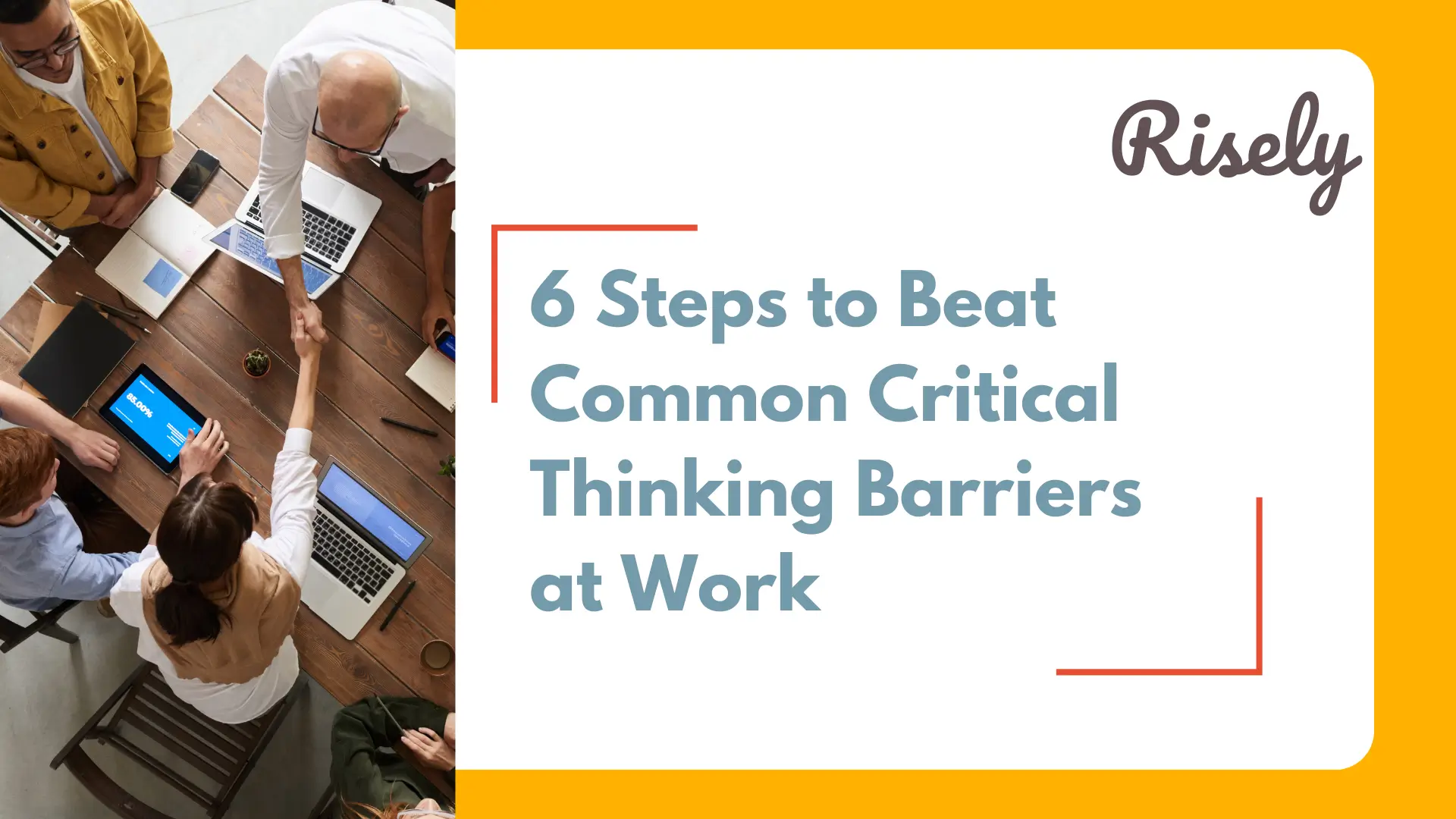
6 Steps to Beat Common Critical Thinking Barriers at Work
How to develop the 8 conceptual skills every manager needs, 7 ways to develop critical thinking skills as a manager, 5 steps to excellent strategic thinking skills for managers.

- Search Search Search …
- Search Search …
How to answer critical thinking questions
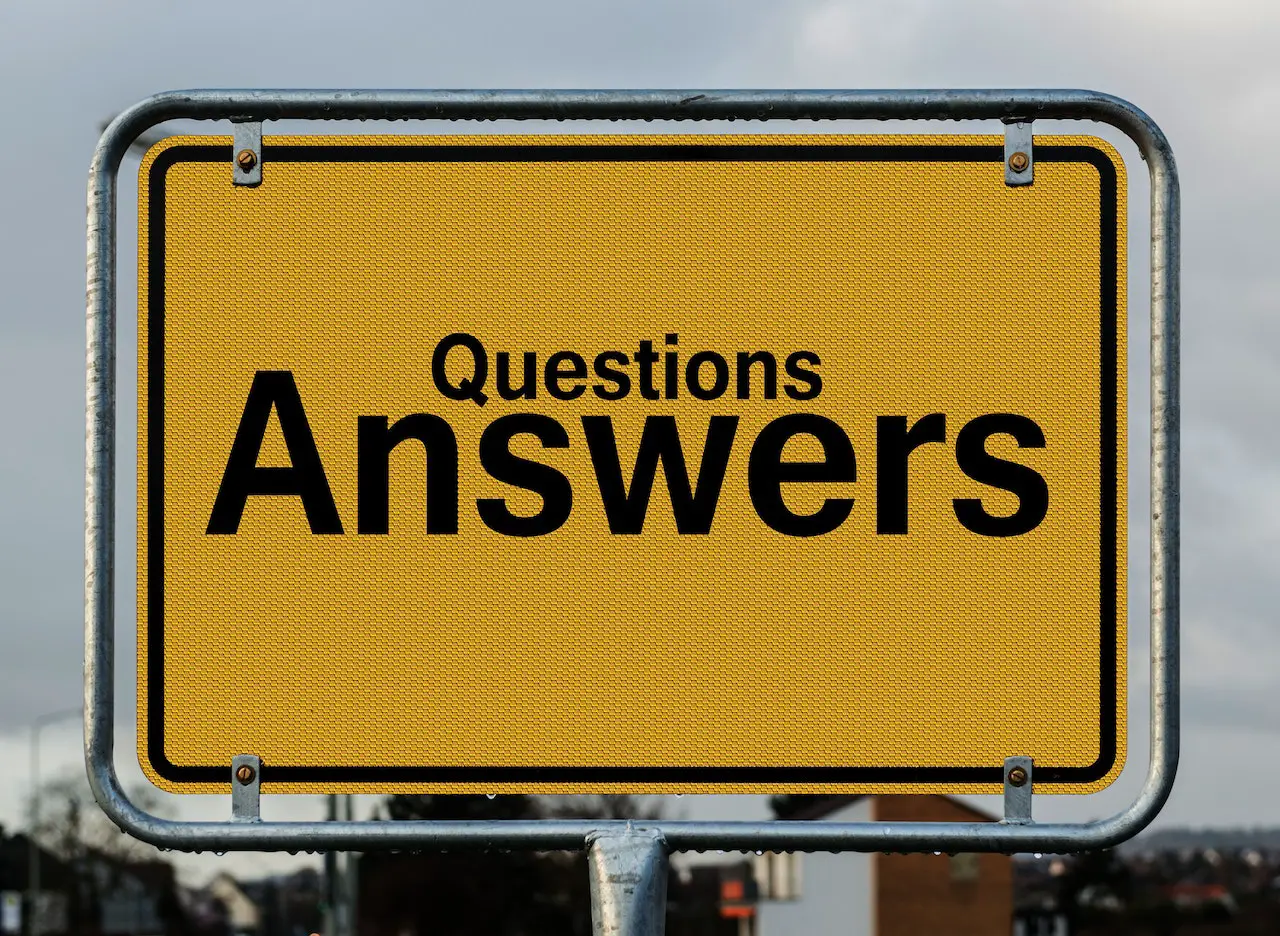
Whether you are studying and preparing to take the LSAT or looking to engage in more meaningful workplace discussions, you need to know how to properly answer critical thinking questions. Luckily, there are some key facets to critical thinking that can guide you along the way.
Thinking critically requires one to proceed beyond mere information recall. When asked to answer questions critically, one should engage their reasoning, evaluation, articulation, and questioning skills. You must closely examine the question in order to arrive at your justified answer.
In this guide, we’ll be sharing some tips to help you answer critical thinking questions adequately. Read along as we discuss the ways to answer by asking useful questions, relying on logic, anticipating specific problems and solutions, and clearly communicating your thoughts. Let’s get into it!
Table of Contents
We’ll be discussing the following 6 methods of answering critical thinking questions in order to give you a framework to start with:
Ask the Important Questions
Consider all possible solutions, articulate yourself clearly, examine and reflect, research and inform yourself, organize your thoughts.
Sometimes, answering a question effectively requires you to ask some questions yourself. When it comes to thinking critically in your response, you may need to investigate by asking for context clues or clearing up any ambiguous aspects of the question.
When you follow-up a question with your own questions, you are engaging in truth-seeking behavior, which is a key element of critical thinking .
Examples of questions you can ask to arrive at a critical answer include:
- Why is this question or problem important?
- How would I solve this problem?
- What would be the consequences if I solved the problem X way?
- How would someone with a different opinion or set of values answer this question?
- Why do I agree or disagree?
- Can you provide me with an example?
- Who is this question geared towards?
- Who will be affected by the solution to this question/problem?
Another thing that sets critical thinkers apart from traditional thinkers is the ability to anticipate multiple different outcomes.
Don’t merely stop at your first answer to the problem you’re being asked about. Take things a step further by drafting several different solutions. Follow step-by-step routes in your mind to try and anticipate how these solutions would play out in reality.
Would there be negative consequences to these solutions? Would there be positive consequences to these solutions? What are they? This can help you to narrow down your ideas and provide the best possible solution.
Critical thinking requires you to communicate your thoughts effectively, in addition to arriving at those thoughts in the first place.
Whether you are answering a critical thinking question verbally in a debate, or writing your thoughts down on a paper exam, you should learn how to justify your answer.
For each point or claim that you make, you should have a valid justification or explanation. Let’s say, for example, that you are asked a question about how to distribute a low amount of resources to a large community.
If you claim that they should be distributed evenly among households, you should consider how that route would affect larger households vs. smaller ones.
Your answer can explore the advantages and disadvantages of your method, landing on an explanation of how it would best serve the community.
When presented with a critical thinking question, it’s not enough to just read the question once and arrive at the first answer that pops into your mind. You should examine the question closely by reading it several times, carefully.
Each time you read the question, check to see if there are meanings or intentions in the question that you didn’t notice before. You can also take this time of reflection to discover ways in which your own assumptions or biases may be negatively influencing your answer.
You can take notes on these things and reflect on them before providing your answer to the question.
Only after examining and reflecting can you get to the precise heart of the question at hand. Then, you can pair it with an equally precise answer.
Critical thinkers also rely on research and newfound knowledge to inform their answers to questions. This involves taking the time to learn about topics that you’re questioned about if you are unfamiliar with them.
For example, if you are asked a question about the economy of a country that you are unfamiliar with, you should research before answering.
Read up on recent economic reports for that country, using credible sources. Make sure that you fully understand every word in the question by pulling out a dictionary.
From there, you can make your answer more accurate and logical overall.
Lastly, a good critical thinker should be able to organize the opinions and thoughts in their answers. Write out a draft of your answer before arriving at your final solution.
Read the answer back to yourself and see if your message is coming across clearly based on the grammar and syntax you’ve used.
If you need to break the answer down into parts and rearrange them to improve it, do so. An organized answer will be easier to understand and may make the difference between a good idea getting lost in the weeds or being championed.
Final Thoughts – 6 Critical Thinking Answer Tips
If you’ve been wanting to learn how to better answer critical thinking questions, then hopefully our guide has given you some inspiration. Some of the key aspects of critical thinking involve one’s ability to ask pertinent questions, examine and reflect on one’s thoughts, set aside biases, make judgments, and clearly communicate.
Make sure to refer to our critical thinking answer tips the next time you are faced with a tough question. Remember, sometimes, a critical answer relies on you taking extra time to research, re-read, re-write, and clarify your own thoughts.
https://louisville.edu/ideastoaction/about/criticalthinking/what
https://www.criticalthinking.org/pages/defining-critical-thinking/766
https://www.utc.edu/academic-affairs/walker-center-for-teaching-and-learning/faculty-programs/faculty-fellow-programs/faculty-fellow-program-development/basic-elements-of-critical-thinking
You may also like

Critical thinking questions for quizzes
Whether you’re a teacher looking to challenge your students to think critically, or you’re studying up in preparation for the LSAT, we’ve […]

When To Use Critical Thinking – What You Need To Know
There is a time and a place to use different skills in life. When faced with a problem that requires calm, logical […]

10 modern day thought leaders on critical thinking
Critical thinking is a vital skill that enables individuals to analyze, evaluate, and interpret information effectively. In today’s dynamic environment, it has […]
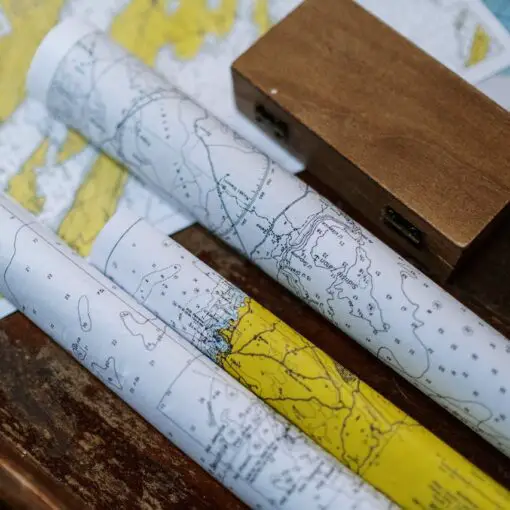
The Map Is Not the Territory: A Concise Analysis of this Cognitive Principle
“The Map Is Not the Territory” is a critical thinking concept that serves as a metaphor highlighting the differences between our perception […]
- Defining Critical Thinking
- A Brief History of the Idea of Critical Thinking
- Critical Thinking: Basic Questions & Answers
- Our Conception of Critical Thinking
- Sumner’s Definition of Critical Thinking
- Research in Critical Thinking
- Critical Societies: Thoughts from the Past
Translate this page from English...
*Machine translated pages not guaranteed for accuracy. Click Here for our professional translations.
Critical Thinking: Basic Questions & Answers
Before viewing our online resources, please seriously consider supporting our work with a financial contribution. As a 501(c)(3) non-profit organization, we cannot do our work without your charitable gifts. We hope you will help us continue to advance fairminded critical societies across the world.
For full copies of many other critical thinking articles, books, videos, and more, join us at the Center for Critical Thinking Community Online - the world's leading online community dedicated to critical thinking! Also featuring interactive learning activities, study groups, and even a social media component, this learning platform will change your conception of intellectual development.

A Crash Course in Critical Thinking
What you need to know—and read—about one of the essential skills needed today..
Posted April 8, 2024 | Reviewed by Michelle Quirk
- In research for "A More Beautiful Question," I did a deep dive into the current crisis in critical thinking.
- Many people may think of themselves as critical thinkers, but they actually are not.
- Here is a series of questions you can ask yourself to try to ensure that you are thinking critically.
Conspiracy theories. Inability to distinguish facts from falsehoods. Widespread confusion about who and what to believe.
These are some of the hallmarks of the current crisis in critical thinking—which just might be the issue of our times. Because if people aren’t willing or able to think critically as they choose potential leaders, they’re apt to choose bad ones. And if they can’t judge whether the information they’re receiving is sound, they may follow faulty advice while ignoring recommendations that are science-based and solid (and perhaps life-saving).
Moreover, as a society, if we can’t think critically about the many serious challenges we face, it becomes more difficult to agree on what those challenges are—much less solve them.
On a personal level, critical thinking can enable you to make better everyday decisions. It can help you make sense of an increasingly complex and confusing world.
In the new expanded edition of my book A More Beautiful Question ( AMBQ ), I took a deep dive into critical thinking. Here are a few key things I learned.
First off, before you can get better at critical thinking, you should understand what it is. It’s not just about being a skeptic. When thinking critically, we are thoughtfully reasoning, evaluating, and making decisions based on evidence and logic. And—perhaps most important—while doing this, a critical thinker always strives to be open-minded and fair-minded . That’s not easy: It demands that you constantly question your assumptions and biases and that you always remain open to considering opposing views.
In today’s polarized environment, many people think of themselves as critical thinkers simply because they ask skeptical questions—often directed at, say, certain government policies or ideas espoused by those on the “other side” of the political divide. The problem is, they may not be asking these questions with an open mind or a willingness to fairly consider opposing views.
When people do this, they’re engaging in “weak-sense critical thinking”—a term popularized by the late Richard Paul, a co-founder of The Foundation for Critical Thinking . “Weak-sense critical thinking” means applying the tools and practices of critical thinking—questioning, investigating, evaluating—but with the sole purpose of confirming one’s own bias or serving an agenda.
In AMBQ , I lay out a series of questions you can ask yourself to try to ensure that you’re thinking critically. Here are some of the questions to consider:
- Why do I believe what I believe?
- Are my views based on evidence?
- Have I fairly and thoughtfully considered differing viewpoints?
- Am I truly open to changing my mind?
Of course, becoming a better critical thinker is not as simple as just asking yourself a few questions. Critical thinking is a habit of mind that must be developed and strengthened over time. In effect, you must train yourself to think in a manner that is more effortful, aware, grounded, and balanced.
For those interested in giving themselves a crash course in critical thinking—something I did myself, as I was working on my book—I thought it might be helpful to share a list of some of the books that have shaped my own thinking on this subject. As a self-interested author, I naturally would suggest that you start with the new 10th-anniversary edition of A More Beautiful Question , but beyond that, here are the top eight critical-thinking books I’d recommend.
The Demon-Haunted World: Science as a Candle in the Dark , by Carl Sagan
This book simply must top the list, because the late scientist and author Carl Sagan continues to be such a bright shining light in the critical thinking universe. Chapter 12 includes the details on Sagan’s famous “baloney detection kit,” a collection of lessons and tips on how to deal with bogus arguments and logical fallacies.

Clear Thinking: Turning Ordinary Moments Into Extraordinary Results , by Shane Parrish
The creator of the Farnham Street website and host of the “Knowledge Project” podcast explains how to contend with biases and unconscious reactions so you can make better everyday decisions. It contains insights from many of the brilliant thinkers Shane has studied.
Good Thinking: Why Flawed Logic Puts Us All at Risk and How Critical Thinking Can Save the World , by David Robert Grimes
A brilliant, comprehensive 2021 book on critical thinking that, to my mind, hasn’t received nearly enough attention . The scientist Grimes dissects bad thinking, shows why it persists, and offers the tools to defeat it.
Think Again: The Power of Knowing What You Don't Know , by Adam Grant
Intellectual humility—being willing to admit that you might be wrong—is what this book is primarily about. But Adam, the renowned Wharton psychology professor and bestselling author, takes the reader on a mind-opening journey with colorful stories and characters.
Think Like a Detective: A Kid's Guide to Critical Thinking , by David Pakman
The popular YouTuber and podcast host Pakman—normally known for talking politics —has written a terrific primer on critical thinking for children. The illustrated book presents critical thinking as a “superpower” that enables kids to unlock mysteries and dig for truth. (I also recommend Pakman’s second kids’ book called Think Like a Scientist .)
Rationality: What It Is, Why It Seems Scarce, Why It Matters , by Steven Pinker
The Harvard psychology professor Pinker tackles conspiracy theories head-on but also explores concepts involving risk/reward, probability and randomness, and correlation/causation. And if that strikes you as daunting, be assured that Pinker makes it lively and accessible.
How Minds Change: The Surprising Science of Belief, Opinion and Persuasion , by David McRaney
David is a science writer who hosts the popular podcast “You Are Not So Smart” (and his ideas are featured in A More Beautiful Question ). His well-written book looks at ways you can actually get through to people who see the world very differently than you (hint: bludgeoning them with facts definitely won’t work).
A Healthy Democracy's Best Hope: Building the Critical Thinking Habit , by M Neil Browne and Chelsea Kulhanek
Neil Browne, author of the seminal Asking the Right Questions: A Guide to Critical Thinking, has been a pioneer in presenting critical thinking as a question-based approach to making sense of the world around us. His newest book, co-authored with Chelsea Kulhanek, breaks down critical thinking into “11 explosive questions”—including the “priors question” (which challenges us to question assumptions), the “evidence question” (focusing on how to evaluate and weigh evidence), and the “humility question” (which reminds us that a critical thinker must be humble enough to consider the possibility of being wrong).

Warren Berger is a longtime journalist and author of A More Beautiful Question .
- Find a Therapist
- Find a Treatment Center
- Find a Support Group
- International
- New Zealand
- South Africa
- Switzerland
- Asperger's
- Bipolar Disorder
- Chronic Pain
- Eating Disorders
- Passive Aggression
- Personality
- Goal Setting
- Positive Psychology
- Stopping Smoking
- Low Sexual Desire
- Relationships
- Child Development
- Therapy Center NEW
- Diagnosis Dictionary
- Types of Therapy

Understanding what emotional intelligence looks like and the steps needed to improve it could light a path to a more emotionally adept world.
- Coronavirus Disease 2019
- Affective Forecasting
- Neuroscience
Critical thinking definition

Critical thinking, as described by Oxford Languages, is the objective analysis and evaluation of an issue in order to form a judgement.
Active and skillful approach, evaluation, assessment, synthesis, and/or evaluation of information obtained from, or made by, observation, knowledge, reflection, acumen or conversation, as a guide to belief and action, requires the critical thinking process, which is why it's often used in education and academics.
Some even may view it as a backbone of modern thought.
However, it's a skill, and skills must be trained and encouraged to be used at its full potential.
People turn up to various approaches in improving their critical thinking, like:
- Developing technical and problem-solving skills
- Engaging in more active listening
- Actively questioning their assumptions and beliefs
- Seeking out more diversity of thought
- Opening up their curiosity in an intellectual way etc.
Is critical thinking useful in writing?
Critical thinking can help in planning your paper and making it more concise, but it's not obvious at first. We carefully pinpointed some the questions you should ask yourself when boosting critical thinking in writing:
- What information should be included?
- Which information resources should the author look to?
- What degree of technical knowledge should the report assume its audience has?
- What is the most effective way to show information?
- How should the report be organized?
- How should it be designed?
- What tone and level of language difficulty should the document have?
Usage of critical thinking comes down not only to the outline of your paper, it also begs the question: How can we use critical thinking solving problems in our writing's topic?
Let's say, you have a Powerpoint on how critical thinking can reduce poverty in the United States. You'll primarily have to define critical thinking for the viewers, as well as use a lot of critical thinking questions and synonyms to get them to be familiar with your methods and start the thinking process behind it.
Are there any services that can help me use more critical thinking?
We understand that it's difficult to learn how to use critical thinking more effectively in just one article, but our service is here to help.
We are a team specializing in writing essays and other assignments for college students and all other types of customers who need a helping hand in its making. We cover a great range of topics, offer perfect quality work, always deliver on time and aim to leave our customers completely satisfied with what they ordered.
The ordering process is fully online, and it goes as follows:
- Select the topic and the deadline of your essay.
- Provide us with any details, requirements, statements that should be emphasized or particular parts of the essay writing process you struggle with.
- Leave the email address, where your completed order will be sent to.
- Select your prefered payment type, sit back and relax!
With lots of experience on the market, professionally degreed essay writers , online 24/7 customer support and incredibly low prices, you won't find a service offering a better deal than ours.
What is the Critical Thinking Test?
Critical thinking practice test, take a free practice critical thinking test, practice critical thinking test.
Updated November 16, 2023

The Critical Thinking Test is a comprehensive evaluation designed to assess individuals' cognitive capacities and analytical prowess.
This formal examination, often referred to as the critical thinking assessment, is a benchmark for those aiming to demonstrate their proficiency in discernment and problem-solving.
In addition, this evaluative tool meticulously gauges a range of skills, including logical reasoning, analytical thinking, and the ability to evaluate and synthesize information.
This article will embark on an exploration of the Critical Thinking Test, elucidating its intricacies and elucidating its paramount importance. We will dissect the essential skills it measures and clarify its significance in gauging one's intellectual aptitude.
We will examine examples of critical thinking questions, illuminating the challenging scenarios that candidates encounter prompting them to navigate the complexities of thought with finesse.
Before going ahead to take the critical thinking test, let's delve into the realm of preparation. This segment serves as a crucible for honing the skills assessed in the actual examination, offering candidates a chance to refine their analytical blades before facing the real challenge. Here are some skills that will help you with the critical thinking assessment: Logical Reasoning: The practice test meticulously evaluates your ability to deduce conclusions from given information, assess the validity of arguments, and recognize patterns in logic. Analytical Thinking: Prepare to dissect complex scenarios, identify key components, and synthesize information to draw insightful conclusions—a fundamental aspect of the critical thinking assessment. Problem-Solving Proficiency: Navigate through intricate problems that mirror real-world challenges, honing your capacity to approach issues systematically and derive effective solutions. What to Expect: The Critical Thinking Practice Test is crafted to mirror the format and complexity of the actual examination. Expect a series of scenarios, each accompanied by a set of questions that demand thoughtful analysis and logical deduction. These scenarios span diverse fields, from business and science to everyday scenarios, ensuring a comprehensive evaluation of your critical thinking skills. Examples of Critical Thinking Questions Scenario: In a business context, analyze the potential impacts of a proposed strategy on both short-term profitability and long-term sustainability. Question: What factors would you consider in determining the viability of the proposed strategy, and how might it affect the company's overall success? Scenario: Evaluate conflicting scientific studies on a pressing environmental issue.
Question: Identify the key methodologies and data points in each study. How would you reconcile the disparities to form an informed, unbiased conclusion?
Why Practice Matters
Engaging in the Critical Thinking Practice Test familiarizes you with the test format and cultivates a mindset geared towards agile and astute reasoning. This preparatory phase allows you to refine your cognitive toolkit, ensuring you approach the assessment with confidence and finesse.
We'll navigate through specific examples as we proceed, offering insights into effective strategies for tackling critical thinking questions. Prepare to embark on a journey of intellectual sharpening, where each practice question refines your analytical prowess for the challenges ahead.
This is a practice critical thinking test.
The test consists of three questions .
After you have answered all the questions, you will be shown the correct answers and given full explanations.
Make sure you read and fully understand each question before answering. Work quickly, but don't rush. You cannot afford to make mistakes on a real test .
If you get a question wrong, make sure you find out why and learn how to answer this type of question in the future.
Six friends are seated in a restaurant across a rectangular table. There are three chairs on each side. Adam and Dorky do not have anyone sitting to their right and Clyde and Benjamin do not have anyone sitting to their left. Adam and Benjamin are not sitting on the same side of the table.
If Ethan is not sitting next to Dorky, who is seated immediately to the left of Felix?

You might also be interested in these other PRT articles:
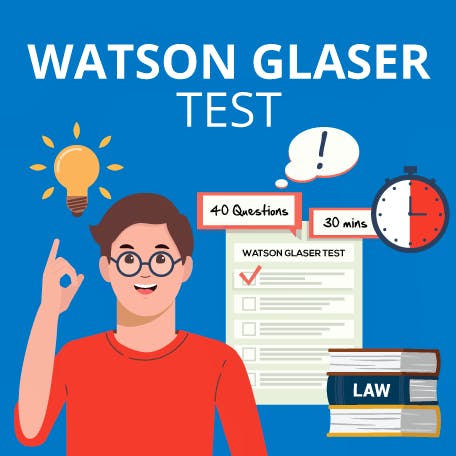

IMAGES
VIDEO
COMMENTS
Humor is a natural icebreaker that can make critical thinking questions more lighthearted and enjoyable. Of course, most younger kids just like to be silly, so playing upon that can keep them active and engaged. With that said, here are some great questions to get you started: 1. Someone gives you a penguin.
Critical Thinking Questions Examples . Critical thinking questions are easy to spot. They're questions that are worded so you can take a more in-depth look at things. They're similar in nature to open-ended questions, in that it's expected the person who's being questioned will provide a substantive answer rather than a short one.
2 The aMAZEing PuzzleBox. 3 Eight critical thinking puzzles - with answers. 3.1 Puzzle 1 - Letter puzzles. 3.2 Puzzle 2 - Commonalities and differences. 3.3 Puzzle 3 - Falling on his feet. 3.4 Puzzle 4 - Walk this way. 3.5 Puzzle 5 - Shapes and symbols. 3.6 Puzzle 6 - Three hard options.
Help kids excel with these critical thinking questions for better creativity, decision-making, and perspectives. ... 150 Fun Critical Thinking Questions For Kids, Teens, & Adults. By Jennifer Kropf Updated: September 22, ... 110 June Trivia Questions and Fun Facts With Answers (2024) My Spring Reboot: 8 April Goals - Week 3 of 4. About.
Your critical thinking skills involve gathering complete information, understanding and defining terms, questioning the methods by which we get facts, questioning the conclusions, and looking for hidden assumptions and biases. Additionally, we can't expect to find all of the answers, and we need to take the time to examine the big picture of ...
First, consider the five words below: Cruise ship. Bicycle. Airplane. Walking on foot. Automobile (not a race car) Now, put them in order from the slowest to the fastest, when they are going at ...
These fun critical thinking questions are just the tip of the iceberg. By engaging in activities that challenge our thinking, we can improve our problem-solving skills and cultivate a more analytical mindset. So, the next time you want to stimulate your brain or spark an interesting conversation, give these questions a try!
This arrangement will help you and your students more clearly understand and identify the specific critical-thinking skills they are using. For each thinking skill in this book, there are two kinds of activities: (1) those that you, as the teacher, will lead, and (2) student reproducibles for indepen-dent work.
In an age of "fake news" claims and constant argument about pretty much any issue, critical thinking skills are key. Teach your students that it's vital to ask questions about everything, but that it's also important to ask the right sorts of questions. Students can use these critical thinking questions with fiction or nonfiction texts.
16 Critical Thinking Questions For Students. Critical thinking is an essential skill that empowers students to think critically and make informed decisions. It encourages them to explore different perspectives, analyze information, and develop logical reasoning. To foster critical thinking skills, it is crucial to ask students thought-provoking ...
This flexible resource features critical thinking questions and answers as well as writing and reading activities for students to explore Hurst's heartbreaking story. 15. "The Veldt" This science fiction story by Ray Bradbury was first published as "The World the Children Made" and it is quite fitting as a title!
The rest of this article will discuss 10 fun activities to improve your critical thinking skills. Contents. 1 Worst Case Scenario. 2 Creative Construction. 3 Story Telling. 4 Pragmatic Problem Solving. 5 Egg Rescue. 6 Critical Analysis. 7 Controversy Conundrum.
Philosophy Questions About Love. "Love is a biological necessity. We cannot live without it". —Stephanie Cacioppo, neuroscientist specializing in love and loneliness. As people, we need to love and be loved. You can express love in many different ways. Use these questions to spark some critical thought on the topic of love, or check out ...
The critical thinking quiz will help you understand when someone is right and acknowledged. Check out our online critical thinking MCQ quiz and see if you ace the art of actively and skillfully analyzing and evaluating information gathered through observation. We have a collection of critical thinking quizzes to help you analyze the facts and ...
Exercise #1: The Ladder of Inference. You can exercise your critical thinking skills by using the Ladder of Inference model. This thinking model was developed by renowned organizational psychologist Chris Argyris. Each rung on the ladder of inference represents a step you take to arrive at your conclusions.
Communication: Effective communication is essential in any workplace. Critical thinking helps employees to communicate their ideas clearly and persuasively. It also enables employees to listen actively, ask insightful questions, and respond thoughtfully. Time management: In fast-paced work environments, employees must make decisions quickly.
Table of Contents. We'll be discussing the following 6 methods of answering critical thinking questions in order to give you a framework to start with: Ask the Important Questions. Consider All Possible Solutions. Articulate Yourself Clearly. Examine and Reflect. Research and Inform Yourself. Organize Your Thoughts.
Glass. 13. There is a word in the English language in which the first two letters signify a male, the first three letters signify a female, the first four signify a great man, and the whole word ...
Historically, trick questions have been used to pass information, entertain, and educate. Some examples of trick questions are puzzles, riddles, and brain teasers. Let's break it down even more. Puzzles. Puzzles are questions or activities requiring you to find the missing pieces, look for connections, find a solution, or complete an image.
Critical Thinking: Basic Questions & Answers. Abstract In this interview for Think magazine (April ''92), Richard Paul provides a quick overview of critical thinking and the issues surrounding it: defining it, common mistakes in assessing it, its relation to communication skills, self-esteem, collaborative learning, motivation, curiosity ...
Here is a series of questions you can ask yourself to try to ensure that you are thinking critically. Conspiracy theories. Inability to distinguish facts from falsehoods. Widespread confusion ...
Share via: Critical thinking, as described by Oxford Languages, is the objective analysis and evaluation of an issue in order to form a judgement. Active and skillful approach, evaluation, assessment, synthesis, and/or evaluation of information obtained from, or made by, observation, knowledge, reflection, acumen or conversation, as a guide to ...
69. You are driving a bus. When you begin your route, there is an old woman named Mrs. Smith and a young boy named Raymond are on the bus. At the first stop, the old woman leaves, and a salesman ...
PRT Critical Thinking Test: question 1 of 3. Six friends are seated in a restaurant across a rectangular table. There are three chairs on each side. Adam and Dorky do not have anyone sitting to their right and Clyde and Benjamin do not have anyone sitting to their left. Adam and Benjamin are not sitting on the same side of the table.